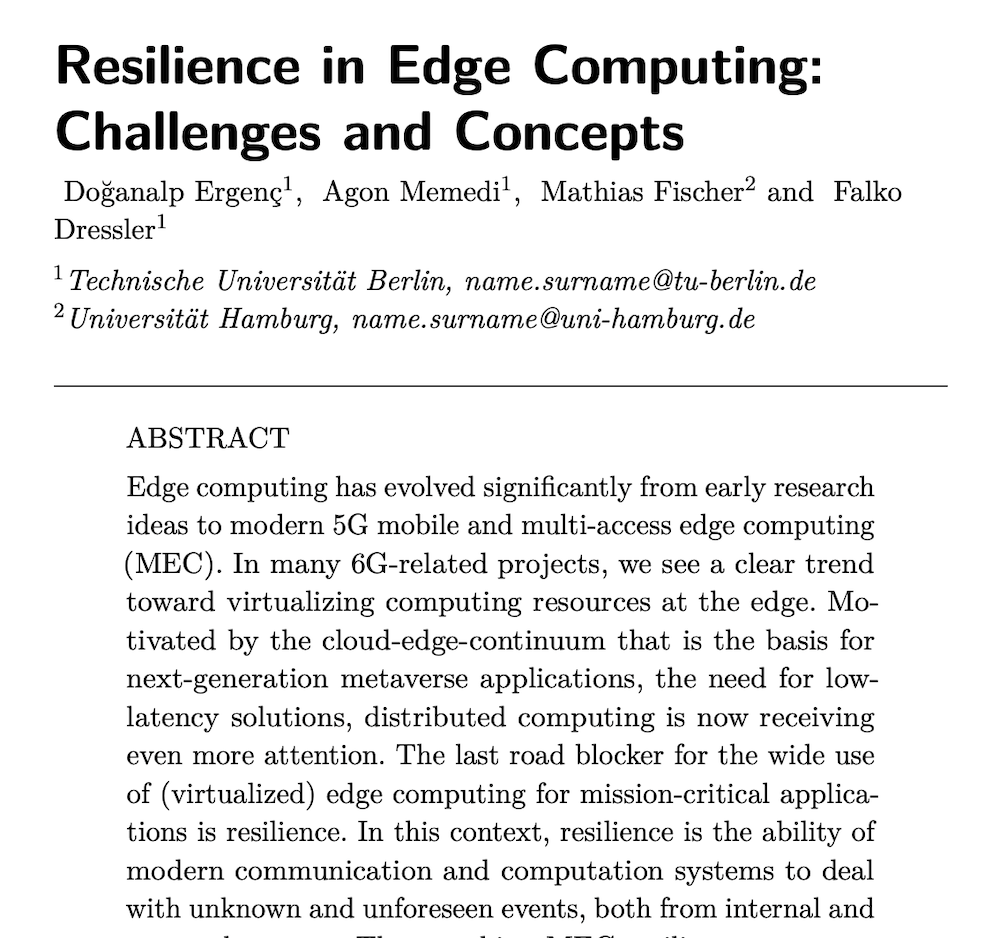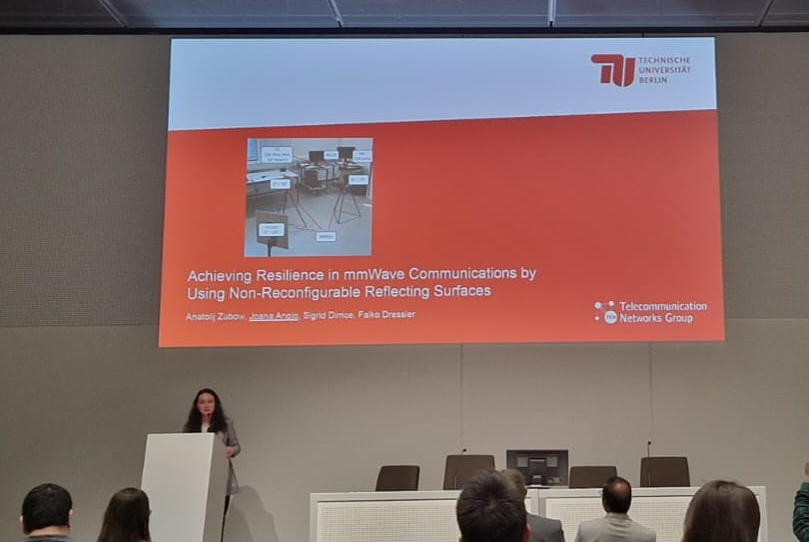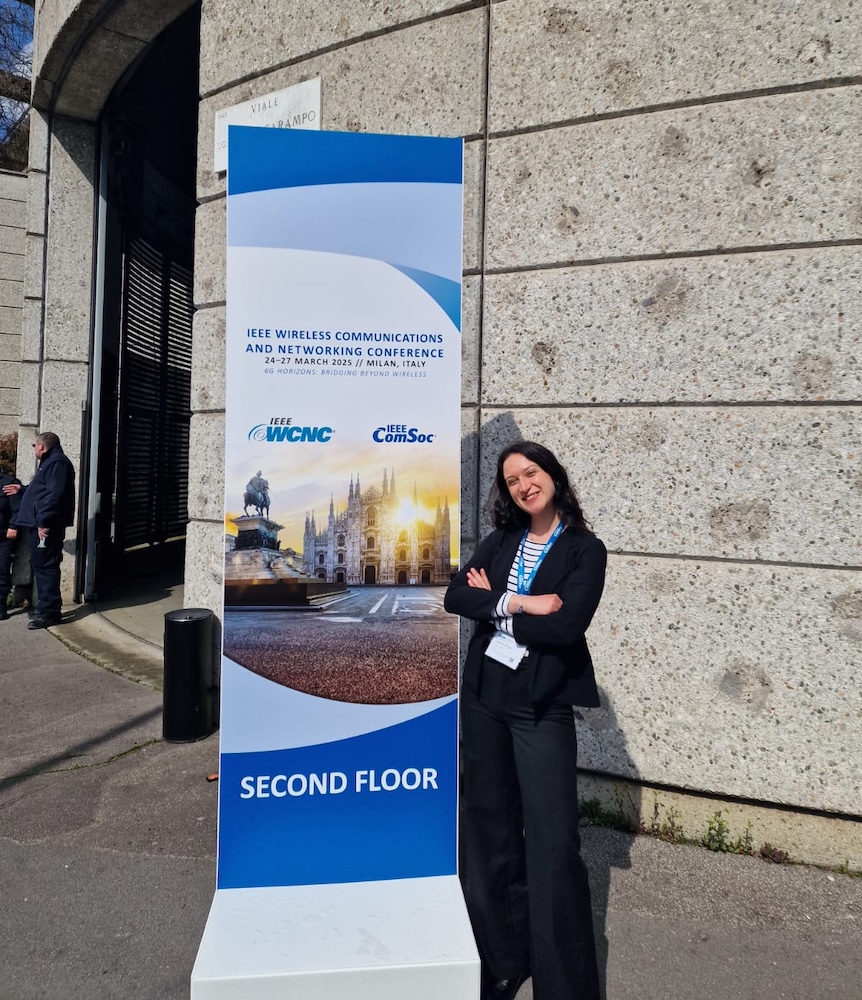News and Announcements

XAInomaly: Explainable and Interpretable Deep Contractive Autoencoder for O-RAN Traffic Anomaly Detection
March 20, 2025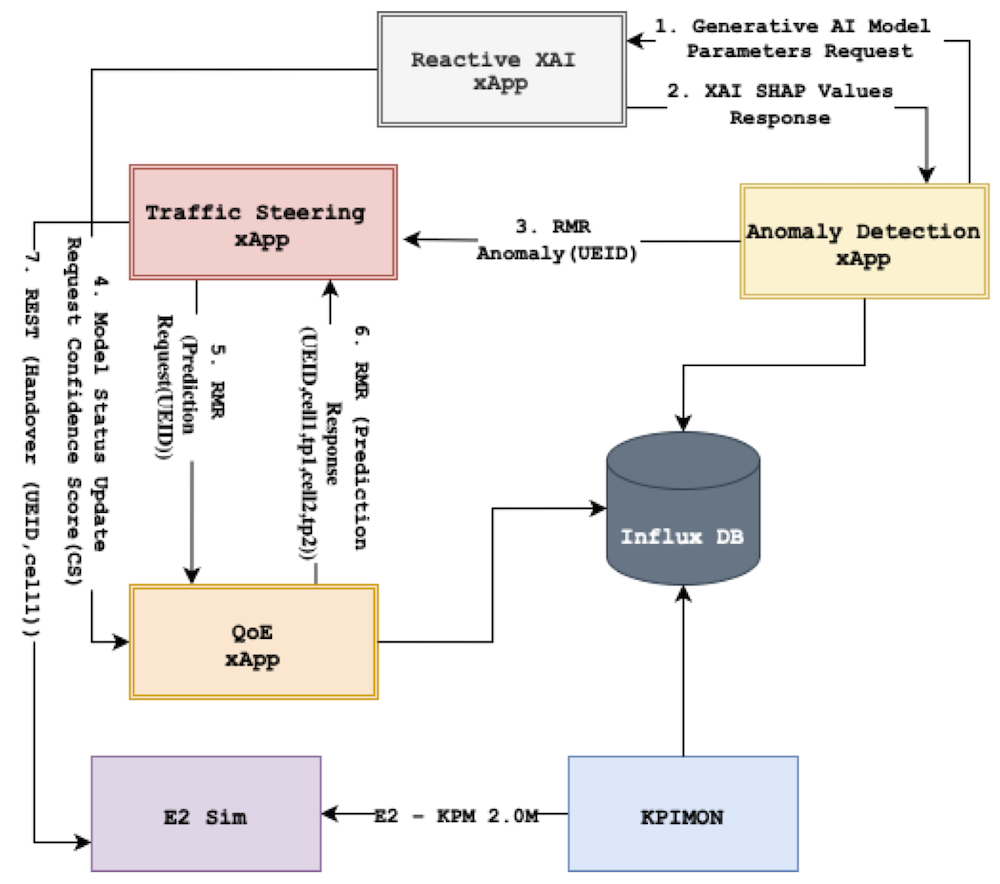
In this study, we introduce the XAInomaly framework, an explainable and interpretable Semi-supervised (SS) Deep Contractive Autoencoder (DeepCAE) design for anomaly detection in O-RAN. Our approach leverages the generative modeling capabilities of our SS-DeepCAE model to learn compressed, robust representations of normal network behavior, which captures essential features, enabling the identification of deviations indicative of anomalies. To address the black-box nature of deep learning models, we propose reactive Explainable AI (XAI) technique called fastshap-C, which is providing transparency into the model's decision-making process and highlighting the features contributing to anomaly detection.
 Osman Tugay Basaran and Falko Dressler, "XAInomaly: Explainable and Interpretable Deep Contractive Autoencoder for O-RAN Traffic Anomaly Detection," Elsevier Computer Networks, vol. 261, pp. 111145, April 2025.
[DOI, BibTeX, More details]
Osman Tugay Basaran and Falko Dressler, "XAInomaly: Explainable and Interpretable Deep Contractive Autoencoder for O-RAN Traffic Anomaly Detection," Elsevier Computer Networks, vol. 261, pp. 111145, April 2025.
[DOI, BibTeX, More details]
Empowering Smart Factories with O-RAN
February 12, 2025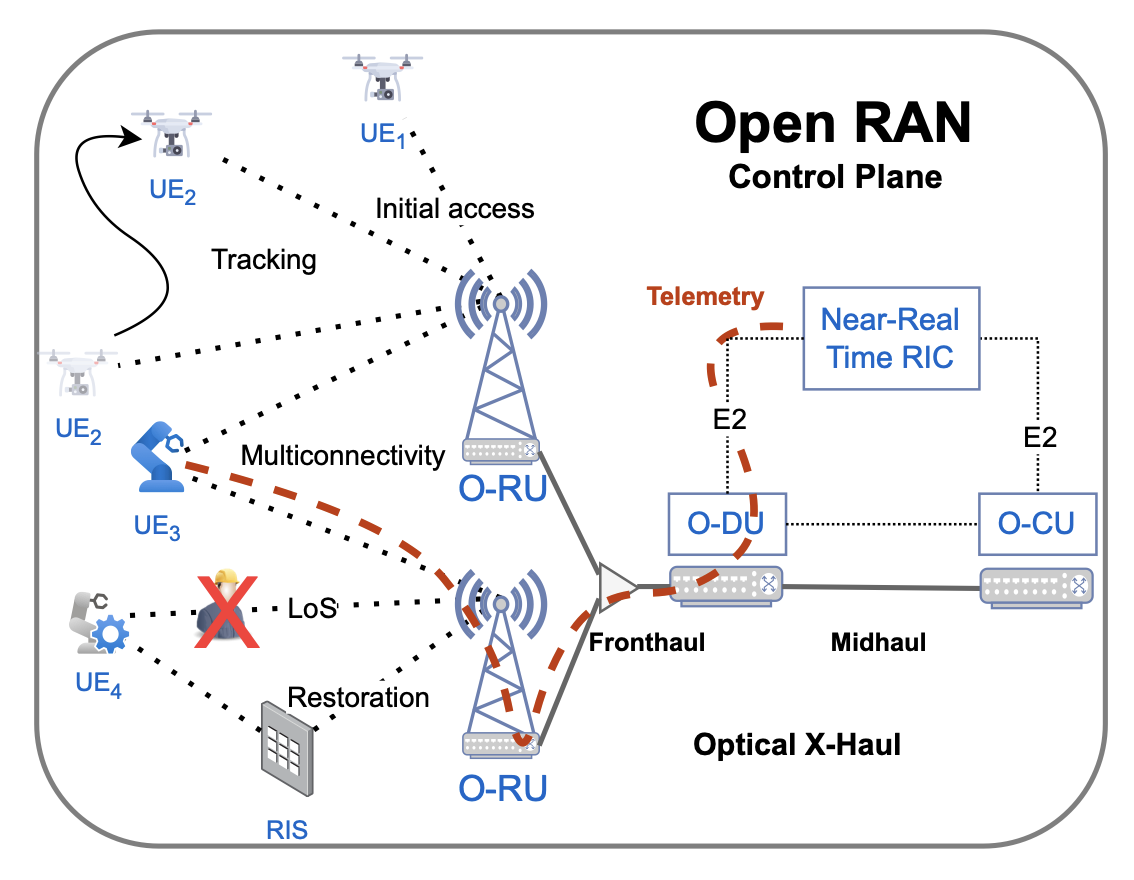
It is envisioned that 6G mobile networks will en hance and majorly empower the Industry 4.0 paradigm, evolving towards smart factories with optimized and customized services. Especially the smart factory scenario with real-time and high-capacity data communication presents us with new challenges, both in communications (mmW/sub-THz) and networking. This article discusses these new challenges and proposes extensions to the current Open Radio Access Network (O-RAN) standards for 6G networks to enable further evolution of Industry 4.0 and beyond. We motivate the need for real-time functionalities in O-RAN and an extended interface to the user equipment (UE) to allow for its fine-grained control.
 André Costa Drummond, Osman Tugay Basaran, Abhishek Dandekar, Max Franke, Mihail Balanici, Iulisloi Zacarias, Ítalo Brasileiro, Cao Vien Phung, Ehsan Tohidi, Naveed Kaim Khani, Sepideh Kouhini, Lorenzo Miretti, Zoran Utkovski, Emre Durmaz, Julius Schulz-Zander, Setareh Maghsudi, Stefan Schmid, Falko Dressler, Behnam Shariati, Johannes Karl Fischer, Ronald Freund, Sławomir Stańczak and Admela Jukan, "Empowering Smart Factories with O-RAN," IEEE Communications Standards Magazine, 2025. (to appear)
[BibTeX, More details]
André Costa Drummond, Osman Tugay Basaran, Abhishek Dandekar, Max Franke, Mihail Balanici, Iulisloi Zacarias, Ítalo Brasileiro, Cao Vien Phung, Ehsan Tohidi, Naveed Kaim Khani, Sepideh Kouhini, Lorenzo Miretti, Zoran Utkovski, Emre Durmaz, Julius Schulz-Zander, Setareh Maghsudi, Stefan Schmid, Falko Dressler, Behnam Shariati, Johannes Karl Fischer, Ronald Freund, Sławomir Stańczak and Admela Jukan, "Empowering Smart Factories with O-RAN," IEEE Communications Standards Magazine, 2025. (to appear)
[BibTeX, More details]
Biasing Federated Learning with A New Adversarial Graph Attention Network
January 31, 2025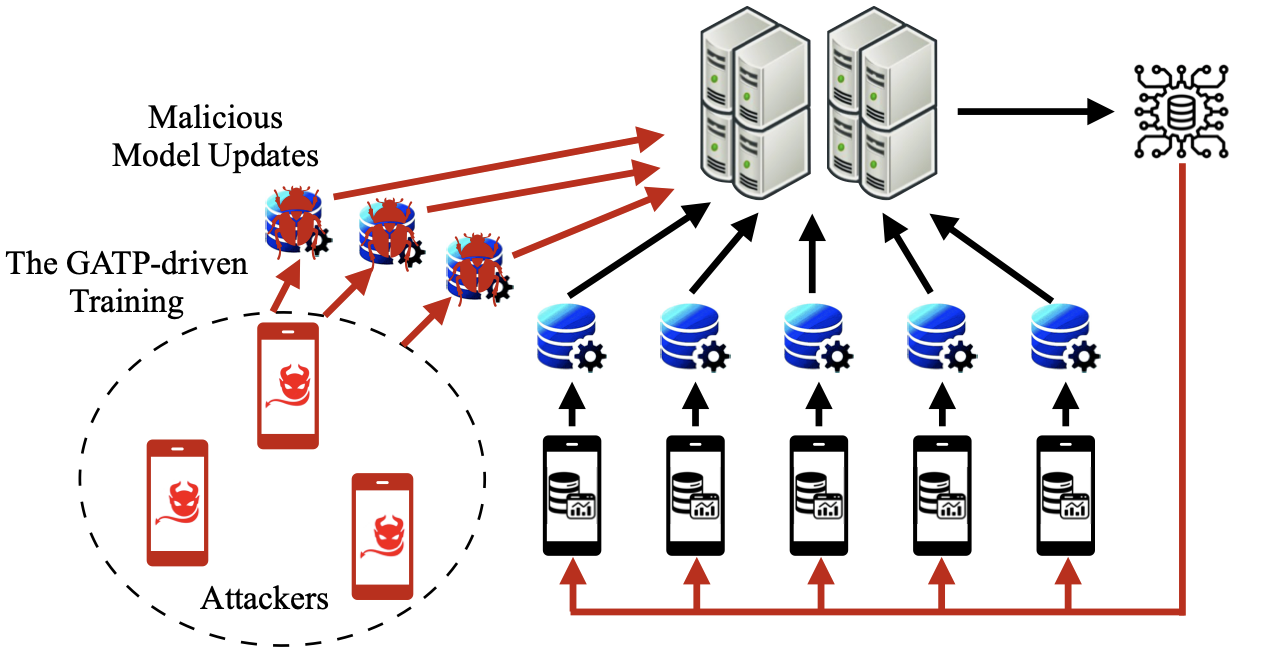
Fairness in Federated Learning (FL) is imperative not only for the ethical utilization of technology but also for ensuring that models provide accurate, equitable, and beneficial outcomes across varied user demographics and equipment. This paper proposes a new adversarial architecture, referred to as Adversarial Graph Attention Network (AGAT), which deliberately instigates fairness attacks with an aim to bias the learning process across the FL. The proposed AGAT is developed to synthesize malicious, biasing model updates, where the minimum of Kullback-Leibler (KL) divergence between the user's model update and the global model is maximized. Due to a limited set of labeled input-output biasing data samples, a surrogate model is created, which presents the behavior of a complex malicious model update. Moreover, a graph autoencoder (GAE) is designed within the AGAT architecture, which is trained together with sub-gradient descent to reconstruct manipulatively the correlations of the model updates, and maximize the reconstruction loss while keeping the malicious, biasing model updates undetectable.
 Kai Li, Jingjing Zheng, Wei Ni, Hailong Huang, Pietro Liò, Falko Dressler and Ozgur B. Akan, "Biasing Federated Learning with A New Adversarial Graph Attention Network," IEEE Transactions on Mobile Computing, vol. 24 (3), March 2025.
[DOI, BibTeX, More details]
Kai Li, Jingjing Zheng, Wei Ni, Hailong Huang, Pietro Liò, Falko Dressler and Ozgur B. Akan, "Biasing Federated Learning with A New Adversarial Graph Attention Network," IEEE Transactions on Mobile Computing, vol. 24 (3), March 2025.
[DOI, BibTeX, More details]
Survey on Coherent Multiband Splicing Techniques for Wideband Channel Characterization
December 31, 2024
Coherent multi-band splicing is an optimal solution for extending existing band-limited communication systems to support high-precision sensing applications. Conceptually, the communication system performs narrow-band measurements at different center frequencies, which are then concatenated to increase the effective bandwidth without altering the sampling rate. This can be done in parallel for multiple non-contiguous subbands or by hopping across the different bands. However, multi-band splicing poses significant challenges, particularly in compensating for phase offsets and hardware distortions before stitching the acquired samples, which can be distributed in contiguous or non-contiguous manners. In this survey paper, we study the state of the art in coherent multi-band splicing and identify open research questions. For beginners in the field, this review serves as a guide to the most relevant literature, enabling them to quickly catch up with the current achievements. For experts, we highlight open research questions that require further investigation.
- Sigrid Dimce and Falko Dressler, "Survey on Coherent Multiband Splicing Techniques for Wideband Channel Characterization," IET Communications, vol. 18 (19), pp. 1319–1334, December 2024. [DOI, BibTeX, More details]
DNA-Based Nanonetwork for Abnormality Detection and Localization in the Human Body
November 19, 2024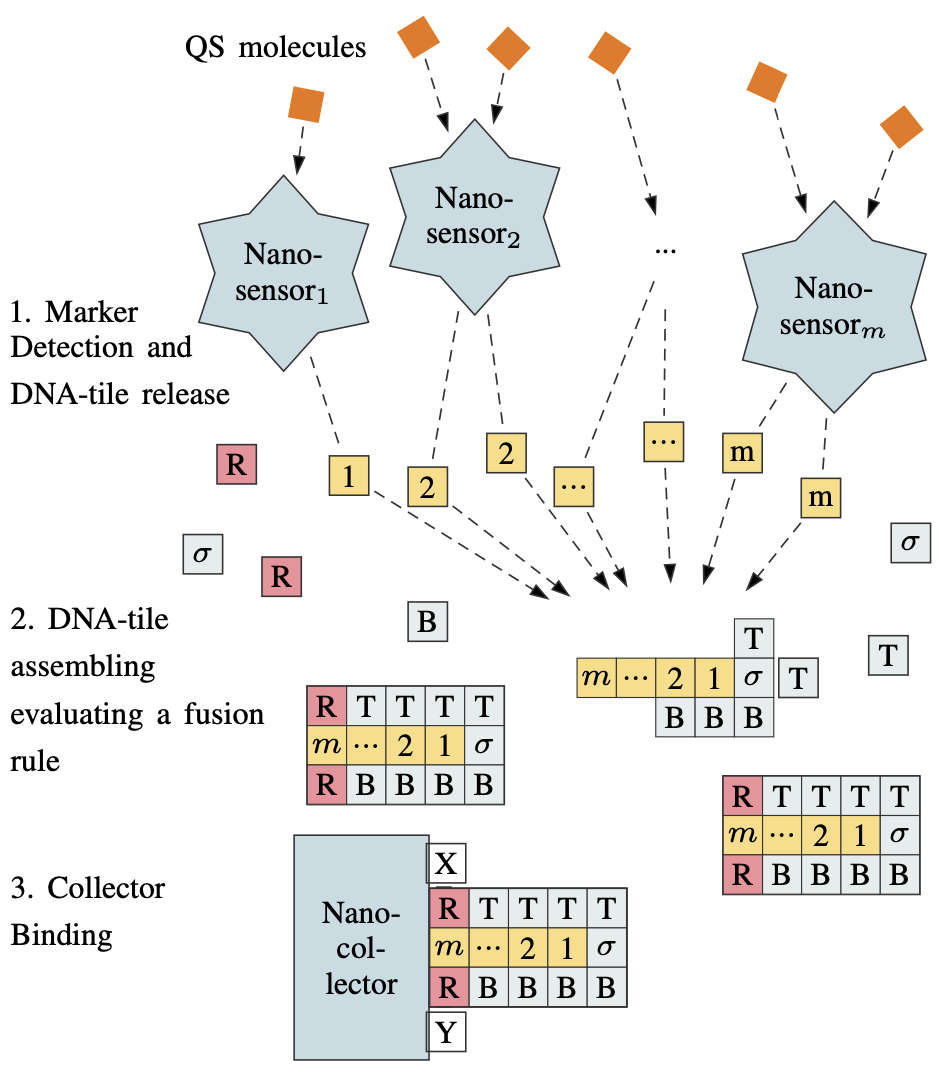
This study presents an innovative deoxyribonucleic acid (DNA)-based nanonetwork designed to detect and localize abnormalities within the human body. The concept for the architecture integrates nanosensors, nanocollectors, and a gateway device, facilitating the detection and communication of disease indicators through molecular and intra-body links. Modeling DNA tiles for signal amplification and fusion rules (AND, OR, MAJORITY), the system enhances detection accuracy while enabling real-time localization of health anomalies via machine learning models. Extensive simulations demonstrate the efficacy of this approach in the dynamic environment of human vessels, showing promising detection probabilities and minimal false alarms. This research contributes to precision medicine by offering a scalable and efficient method for early disease detection and localization, paving the way for timely interventions and improved healthcare outcomes.
 Jorge Torres Gómez, Bige Deniz Unluturk, Florian-Lennert Adrian Lau, Jennifer Simonjan, Regine Wendt, Stefan Fischer and Falko Dressler, "DNA-Based Nanonetwork for Abnormality Detection and Localization in the Human Body," IEEE Transactions on Nanotechnology, vol. 23, pp. 794–808, November 2024.
[DOI, BibTeX, More details]
Jorge Torres Gómez, Bige Deniz Unluturk, Florian-Lennert Adrian Lau, Jennifer Simonjan, Regine Wendt, Stefan Fischer and Falko Dressler, "DNA-Based Nanonetwork for Abnormality Detection and Localization in the Human Body," IEEE Transactions on Nanotechnology, vol. 23, pp. 794–808, November 2024.
[DOI, BibTeX, More details]
Distributed Age-of-Information Scheduling with NOMA via Deep Reinforcement Learning
October 24, 2024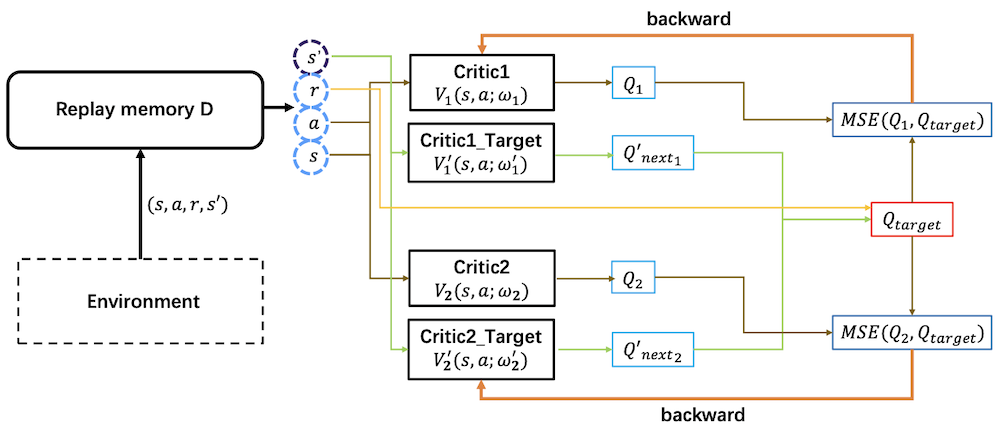
Many emerging applications in edge computing require processing of huge volumes of data generated by end devices, using the freshest available information. In this paper, we address the distributed optimization of multi-user long-term average Age-of-Information (AoI) objectives in edge networks that use NOMA transmission. This poses a challenge of non-convex online optimization, which in existing work often requires either decision making in a combinatorial space or a global view of entire network states. To overcome this challenge, we propose a reinforcement learning-based framework that adopts a novel hierarchical decomposition of decision making. Specifically, we propose three different types of distributed agents to learn with respect to efficiency of AoI scheduling, fairness of AoI scheduling, as well as a high-level policy balancing these potentially conflicting design objectives. Not only does the proposed decomposition improve learning performance due to disentanglement of different design objectives/rewards, but it also enables the algorithm to learn the best policy while also learning the explanations - as actions can be directly compared in terms of the design objectives. Our evaluations show that the proposed algorithm improves the long-term average AoI by 200% - 300% and 400%
 Congwei Zhang, Yifei Zou, Zuyuan Zhang, Jorge Torres Gómez, Tian Lan, Falko Dressler and Xiuzhen Cheng, "Distributed Age-of-Information Scheduling with NOMA via Deep Reinforcement Learning," IEEE Transactions on Mobile Computing, vol. 24 (1), pp. 30–44, January 2025.
[DOI, BibTeX, More details]
Congwei Zhang, Yifei Zou, Zuyuan Zhang, Jorge Torres Gómez, Tian Lan, Falko Dressler and Xiuzhen Cheng, "Distributed Age-of-Information Scheduling with NOMA via Deep Reinforcement Learning," IEEE Transactions on Mobile Computing, vol. 24 (1), pp. 30–44, January 2025.
[DOI, BibTeX, More details]
Age of Information-based Abnormality Detection with Decay in the Human Circulatory System
September 15, 2024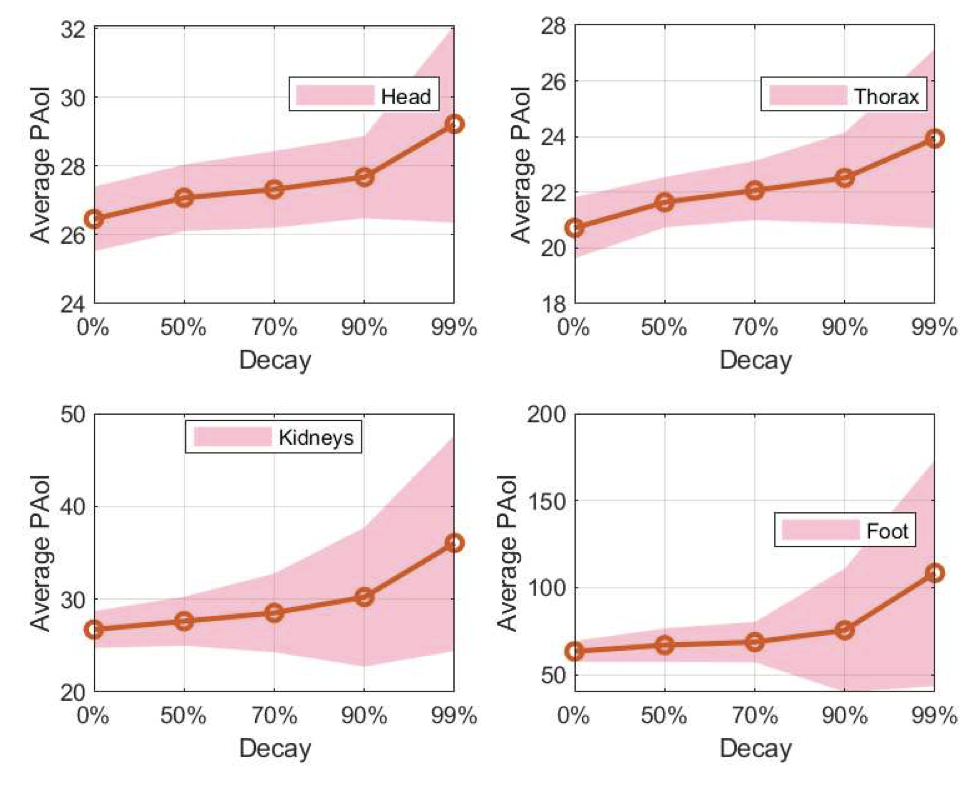
Detecting abnormalities early by deploying a network of mobile nanosensors within the human body remains a challenging task. Current methods for abnormality detection rely on placing gateways at arbitrary locations. In this work, we conducted an analysis of the impact of gateway placement and infection locations on detection time, detection ratio, and the average Peak Age of Information (PAoI). Our results revealed that the favorable gateway position is at the heart, minimizing detection time and enhancing the detection ratio for various infection locations. Furthermore, we observed that the detection ratio exhibited reduced variance with increased decay rates in nanosensors. Analyzing the PAoI across varying decay rates highlighted the importance of nanosensor quantity in relation to decay rate in ensuring accurate and timely infection localization.
 Saswati Pal, Jorge Torres Gómez, Regine Wendt, Stefan Fischer and Falko Dressler, "Age of Information-based Abnormality Detection with Decay in the Human Circulatory System," IEEE Transactions on Molecular, Biological and Multi-Scale Communications, vol. 10 (3), pp. 487–492, September 2024.
[DOI, BibTeX, More details]
Saswati Pal, Jorge Torres Gómez, Regine Wendt, Stefan Fischer and Falko Dressler, "Age of Information-based Abnormality Detection with Decay in the Human Circulatory System," IEEE Transactions on Molecular, Biological and Multi-Scale Communications, vol. 10 (3), pp. 487–492, September 2024.
[DOI, BibTeX, More details]
Using Ranging for Collision-Immune IEEE 802.11 Rate Selection with Statistical Learning
August 10, 2024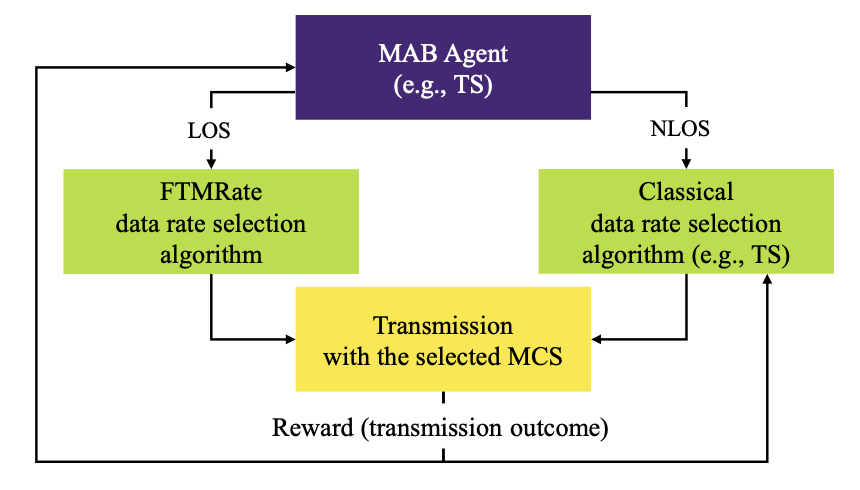
Appropriate data rate selection at the physical layer is crucial for Wi-Fi network performance: too high rates lead to loss of data frames, while too low rates cause increased latency and inefficient channel use. Most existing methods adopt a probing approach and empirically assess the transmission success probability for each available rate. We avoid this issue by resorting to the fine timing measurement (FTM) procedure, part of IEEE 802.11, which allows stations to perform ranging, i.e., measure their spatial distance to the AP. Since distance is not affected by sporadic distortions such as internal and external channel interference, we use this knowledge for data rate selection. Specifically, we propose FTMRate, which applies statistical learning (a form of machine learning) to estimate the distance based on measurements, predicts channel quality from the distance, and selects data rates based on channel quality.
 Wojciech Ciezobka, Maksymilian Wojnar, Krzysztof Rusek, Katarzyna Kosek-Szott, Szymon Szott, Anatolij Zubow and Falko Dressler, "Using Ranging for Collision-Immune IEEE 802.11 Rate Selection with Statistical Learning," Elsevier Computer Communications, vol. 225, pp. 10–26, September 2024.
[DOI, BibTeX, More details]
Wojciech Ciezobka, Maksymilian Wojnar, Krzysztof Rusek, Katarzyna Kosek-Szott, Szymon Szott, Anatolij Zubow and Falko Dressler, "Using Ranging for Collision-Immune IEEE 802.11 Rate Selection with Statistical Learning," Elsevier Computer Communications, vol. 225, pp. 10–26, September 2024.
[DOI, BibTeX, More details]
Where to Decide? Centralized vs. Distributed Vehicle Assignment for Platoon Formation
July 17, 2024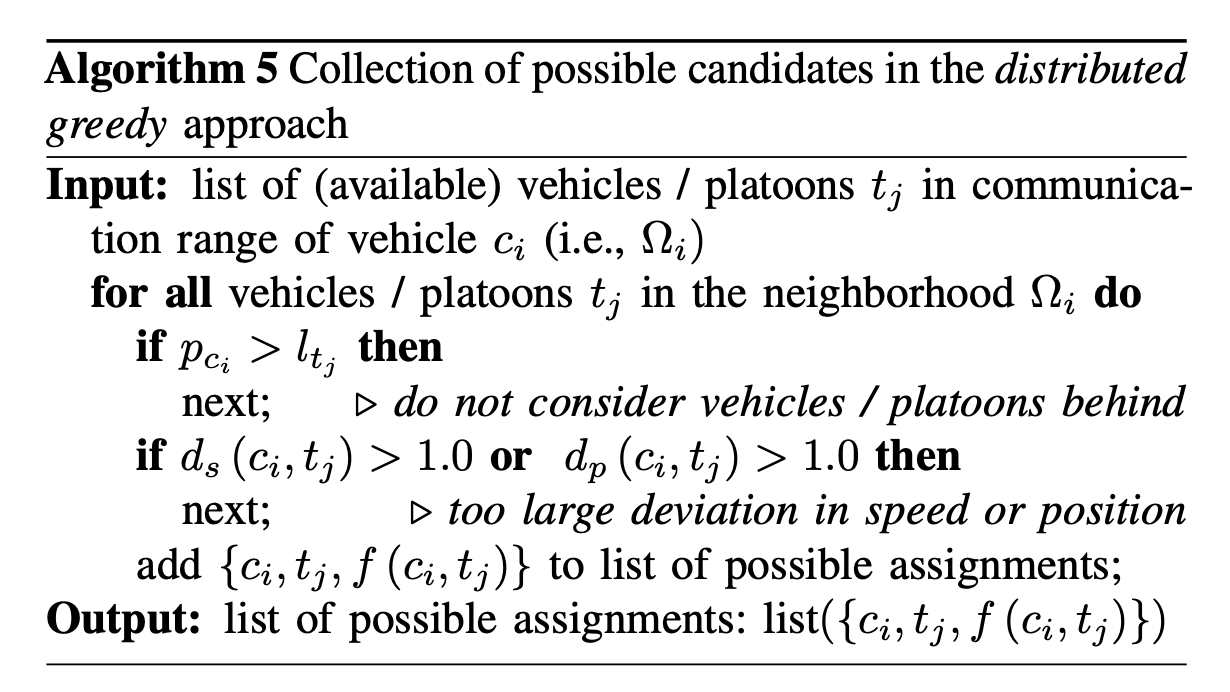
Optimized platoon formation is crucial for achieving best performance in terms of travel time and energy consumption. We explore the computation of vehicle-to-platoon assignments based on similarity between vehicles focusing on desired driving speed and current position on the road. We developed three approaches to solve this assignment problem: a centralized solver and a centralized as well as a distributed greedy heuristic. We performed a large-scale simulation study using PlaFoSim to compare all approaches. The centralized solver approach assumes global knowledge and requires a complex MIP solver to compute vehicle-to-platoon assignments. The centralized greedy approach, however, suffers from synchronization and greedy selection effects. Overall, the distributed greedy approach achieves close to optimal results but requires least assumptions and complexity.
 Julian Heinovski and Falko Dressler, "Where to Decide? Centralized vs. Distributed Vehicle Assignment for Platoon Formation," IEEE Transactions on Intelligent Transportation Systems, vol. 25 (11), pp. 17317–17334, November 2024.
[DOI, BibTeX, More details]
Julian Heinovski and Falko Dressler, "Where to Decide? Centralized vs. Distributed Vehicle Assignment for Platoon Formation," IEEE Transactions on Intelligent Transportation Systems, vol. 25 (11), pp. 17317–17334, November 2024.
[DOI, BibTeX, More details]
Private Over-the-Air Federated Learning at Band-Limited Edge
June 20, 2024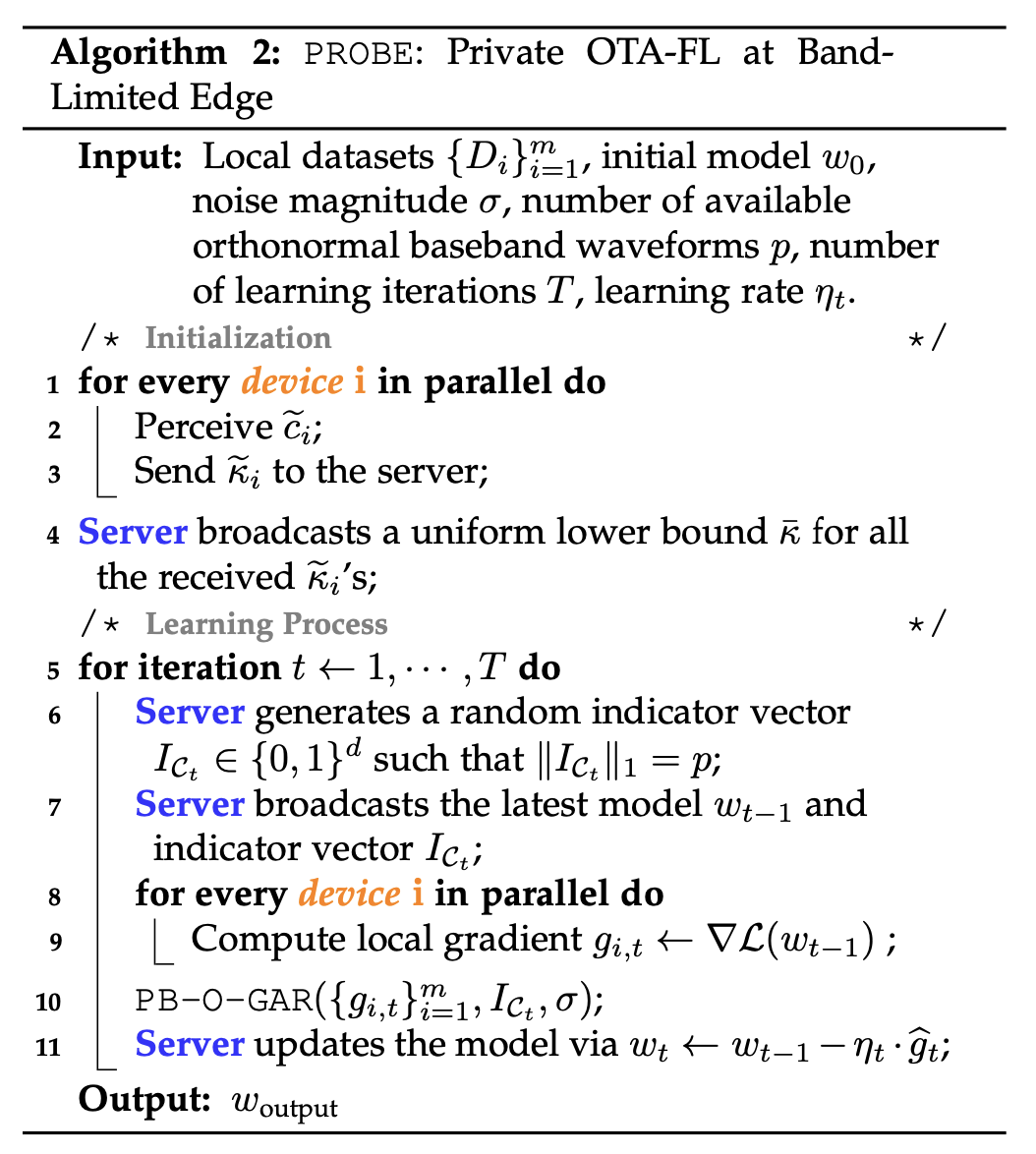
We investigate over-the-air federated learning (OTA-FL) that exploits over-the-air computing (AirComp) to integrate communication and computation seamlessly for FL. Privacy presents a serious obstacle for OTA-FL, as it can be compromised by maliciously manipulating channel state information (CSI). Moreover, the limited band at edge hinders OTA-FL from training large-scale models. It remains open how to enable a multitude of devices with constrained resources and sensitive data to collaboratively train a global model at band-limited edge. To tackle this, we design a novel algorithm PROBE building upon a lightweight over-the-air gradients aggregation rule PB-O-GAR. Specifically, PB-O-GAR combines a random sparsification-like dimension reduction with Gaussian perturbation to provide rigorous privacy and band-adapted communication. It elaborately calibrates the transmission signal according to devices' perceived CSI for heterogeneous power constraints accommodation and CSI attack resilience. We show that by utilizing the common randomness, which deviates from the conventional FL, random sparsification-like dimension reduction can augment privacy in addition to the intrinsic privacy amplification effect of AirComp. We establish near-optimal convergence rates and explicit trade-offs among privacy, communication and utility for PROBE. Finally, extensive experiments on benchmark datasets are conducted to validate our theoretical findings and showcase the superiority of PROBE in realistic settings.
 Youming Tao, Shuzhen Chen, Congwei Zhang, Di Wang, Dongxiao Yu, Xiuzhen Cheng and Falko Dressler, "Private Over-the-Air Federated Learning at Band-Limited Edge," IEEE Transactions on Mobile Computing, vol. 23 (12), pp. 12444–12460, December 2024.
[DOI, BibTeX, PDF, More details]
Youming Tao, Shuzhen Chen, Congwei Zhang, Di Wang, Dongxiao Yu, Xiuzhen Cheng and Falko Dressler, "Private Over-the-Air Federated Learning at Band-Limited Edge," IEEE Transactions on Mobile Computing, vol. 23 (12), pp. 12444–12460, December 2024.
[DOI, BibTeX, PDF, More details]
Leverage Variational Graph Representation For Model Poisoning on Federated Learning
May 15, 2024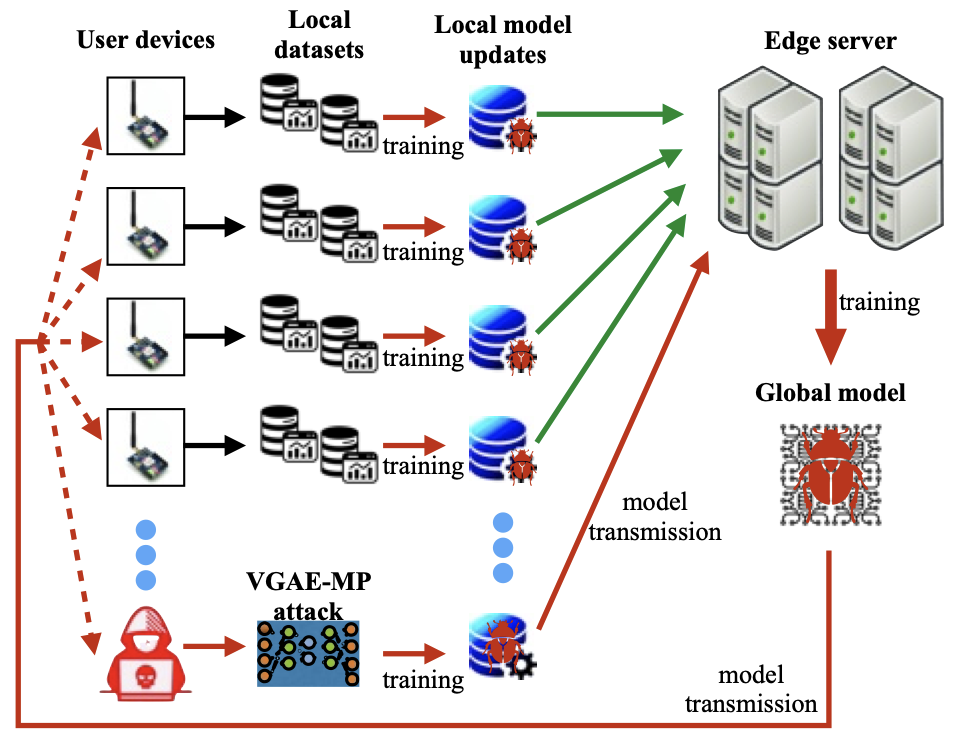
This paper puts forth a new training data-untethered model poisoning (MP) attack on federated learning (FL). The new MP attack extends an adversarial variational graph autoencoder (VGAE) to create malicious local models based solely on the benign local models overheard without any access to the training data of FL. Such an advancement leads to the VGAE-MP attack that is not only efficacious but also remains elusive to detection. VGAE-MP attack extracts graph structural correlations among the benign local models and the training data features, adversarially regenerates the graph structure, and generates malicious local models using the adversarial graph structure and benign models' features. Moreover, a new attacking algorithm is presented to train the malicious local models using VGAE and sub-gradient descent, while enabling an optimal selection of the benign local models for training the VGAE. Experiments demonstrate a gradual drop in FL accuracy under the proposed VGAE-MP attack and the ineffectiveness of existing defense mechanisms in detecting the attack, posing a severe threat to FL.
 Kai Li, Xin Yuan, Jingjing Zheng, Wei Ni, Falko Dressler and Abbas Jamalipour, "Leverage Variational Graph Representation For Model Poisoning on Federated Learning," IEEE Transactions on Neural Networks and Learning Systems, vol. 36 (1), January 2025.
[DOI, BibTeX, More details]
Kai Li, Xin Yuan, Jingjing Zheng, Wei Ni, Falko Dressler and Abbas Jamalipour, "Leverage Variational Graph Representation For Model Poisoning on Federated Learning," IEEE Transactions on Neural Networks and Learning Systems, vol. 36 (1), January 2025.
[DOI, BibTeX, More details]
Low-Complex Synchronization Method for Intra-Body Links in the Terahertz Band
April 16, 2024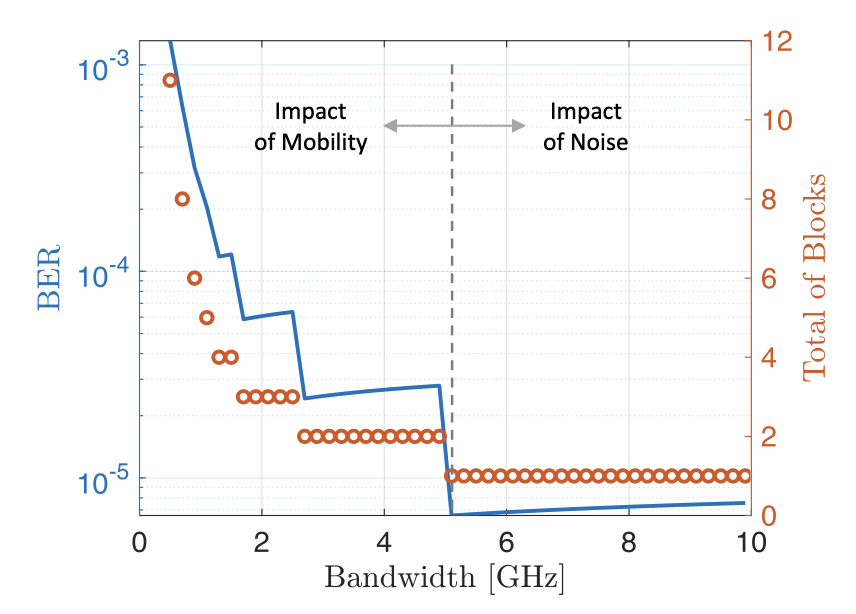
The recent literature focuses on deriving analytic channel models for intra-body links through the human tissues, including the analysis of achievable communication capacities in the terahertz band. A yet missing component, however, is a synchronization module to implement communication schemes in the intra-body link. Such synchronization module will ultimately bound the communication performance regarding the perceived signal to noise ratio (SNR) and bit error rate (BER), for instance. This paper contributes to the state of the art in two directions: (a) evaluating the bounds on the communication performance with the Cramer-Rao lower bound (CRLB) for the synchronization symbol timing offset (STO) and (b) designing a low-complex mechanism to synchronize communication.
 Jorge Torres Gómez, Jennifer Simonjan and Falko Dressler, "Low-Complex Synchronization Method for Intra-Body Links in the Terahertz Band," IEEE Journal on Selected Areas in Communications, vol. 42 (8), pp. 1967–1977, August 2024.
[DOI, BibTeX, PDF, More details]
Jorge Torres Gómez, Jennifer Simonjan and Falko Dressler, "Low-Complex Synchronization Method for Intra-Body Links in the Terahertz Band," IEEE Journal on Selected Areas in Communications, vol. 42 (8), pp. 1967–1977, August 2024.
[DOI, BibTeX, PDF, More details]
Electric Circuit Representation of the Human Circulatory System to Estimate the Position of Nanosensors in Vessels
March 26, 2024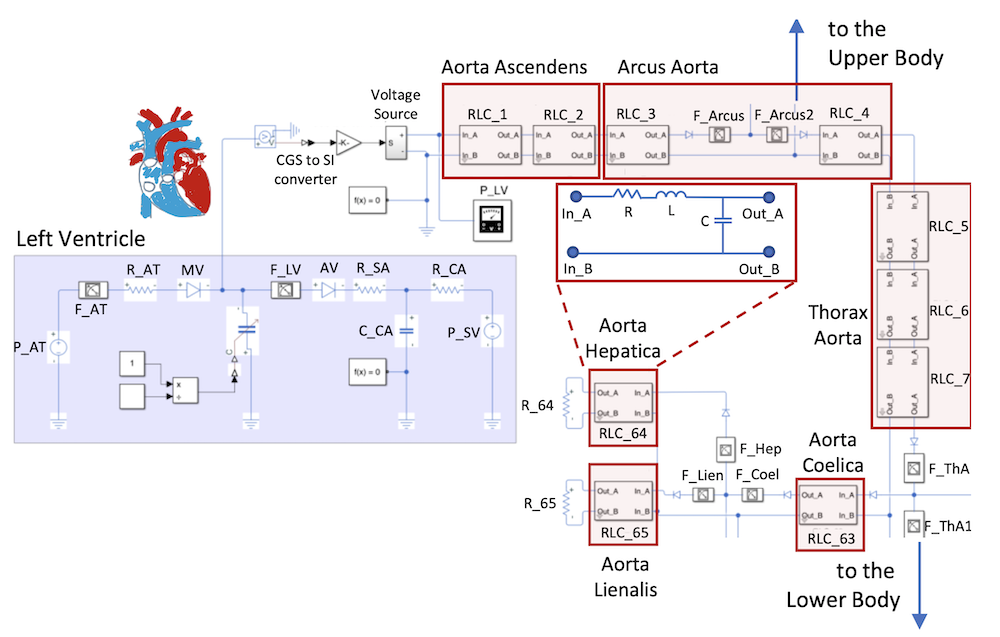
Nanodevices are the focus of research enhancing the detection and treatment of diseases in the human body. Focusing on the scenario where nanosensors are flowing with the blood in the human circulatory system (HCS), in this work, we investigate a model to predict their distribution along the various vessel segments. Although various approaches report solutions for localizing nanosensors in the body, it is also relevant to derive their stationary distribution along the vessel segments as a prior step to assess their actuation and sensing capabilities in the body. We use a Markov chain formulation to derive the stationary distribution of nanosensors. We evaluate the transition probabilities relying on the representation of vessels with electric circuit components. We implement the electric circuit representation of the left ventricle in the heart and the arteries to find the blood flow at vessel bifurcations and then compute the Markov chain probabilities. Our system also allows to reveal the dynamics of the movement of nanosensors during human activity. We illustrate results in two regimes as low and high activity to mimic the case when being at rest or doing sports.
 Jorge Torres Gómez, Jorge Luis González Rios and Falko Dressler, "Electric Circuit Representation of the Human Circulatory System to Estimate the Position of Nanosensors in Vessels," Elsevier Nano Communication Networks, vol. 40, pp. 100499, July 2024.
[DOI, BibTeX, PDF, More details]
Jorge Torres Gómez, Jorge Luis González Rios and Falko Dressler, "Electric Circuit Representation of the Human Circulatory System to Estimate the Position of Nanosensors in Vessels," Elsevier Nano Communication Networks, vol. 40, pp. 100499, July 2024.
[DOI, BibTeX, PDF, More details]
Side Effects of IRS: On the Need for Coordination in 6G Multi-Operator IRS-assisted Networks
February 15, 2024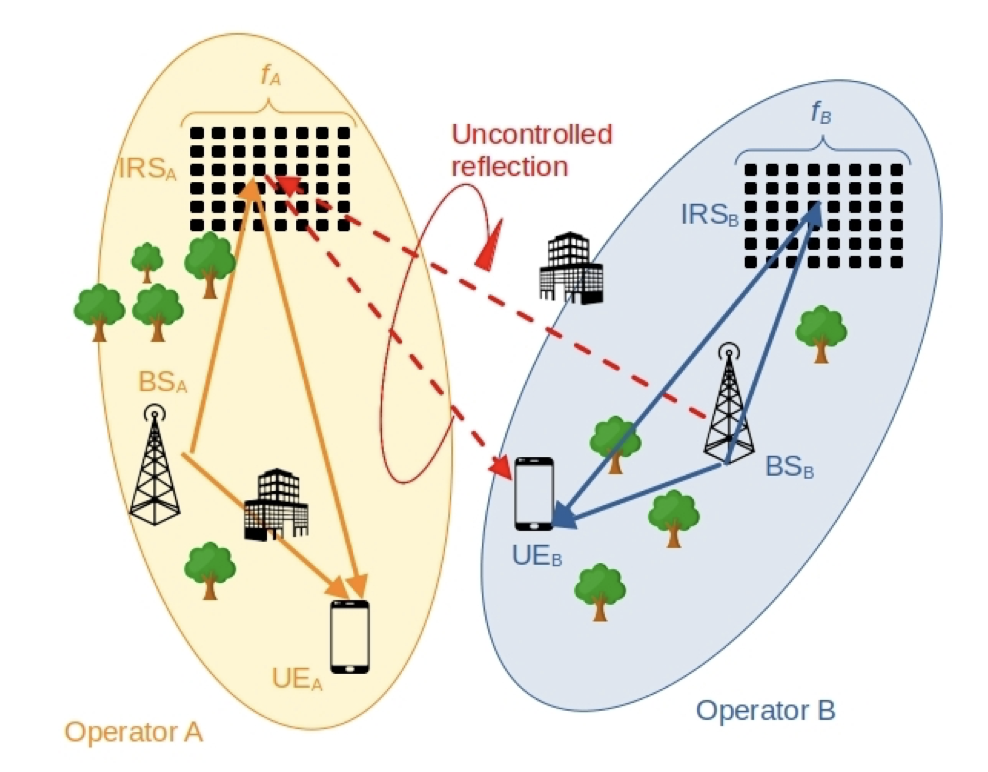
An IRS manipulates the channel propagation characteristics not only of signals of the operator who controls the IRS, but also of signals of other operators, although they operate at different frequencies. This is because IRS usually do not employ band pass filtering and, thus, also reflect signals of other frequencies. In this paper, we first introduce and discuss the problem of multi-operator coexistence issues that arise in IRS-assisted networks. We then propose splitting a single common IRS into multiple sub-blocks (subIRS) and controlling their dynamic assignment to operators, by taking into account the impact on the proximate operators as well. We show that the performance of the overall multi-operator network can be improved significantly if subIRS are properly assigned to the operators, compared to a purely static or random assignments. Our simulations results reveal that a significant improvement in terms of the sum rate and the fairness with respect to the respective data rate of the operators can be achieved.
 Joana Angjo, Anatolij Zubow and Falko Dressler, "Side Effects of IRS: On the Need for Coordination in 6G Multi-Operator IRS-assisted Networks," Proceedings of IEEE Global Communications Conference (GLOBECOM 2023), 4th Workshop on Emerging Topics in 6G Communications (6GComm 2023), Kuala Lumpur, Malaysia, December 2023, pp. 1380–1385.
[DOI, BibTeX, PDF, More details]
Joana Angjo, Anatolij Zubow and Falko Dressler, "Side Effects of IRS: On the Need for Coordination in 6G Multi-Operator IRS-assisted Networks," Proceedings of IEEE Global Communications Conference (GLOBECOM 2023), 4th Workshop on Emerging Topics in 6G Communications (6GComm 2023), Kuala Lumpur, Malaysia, December 2023, pp. 1380–1385.
[DOI, BibTeX, PDF, More details]
Distributed UWB-based Ranging for Particle Tracking in Avalanches
January 30, 2024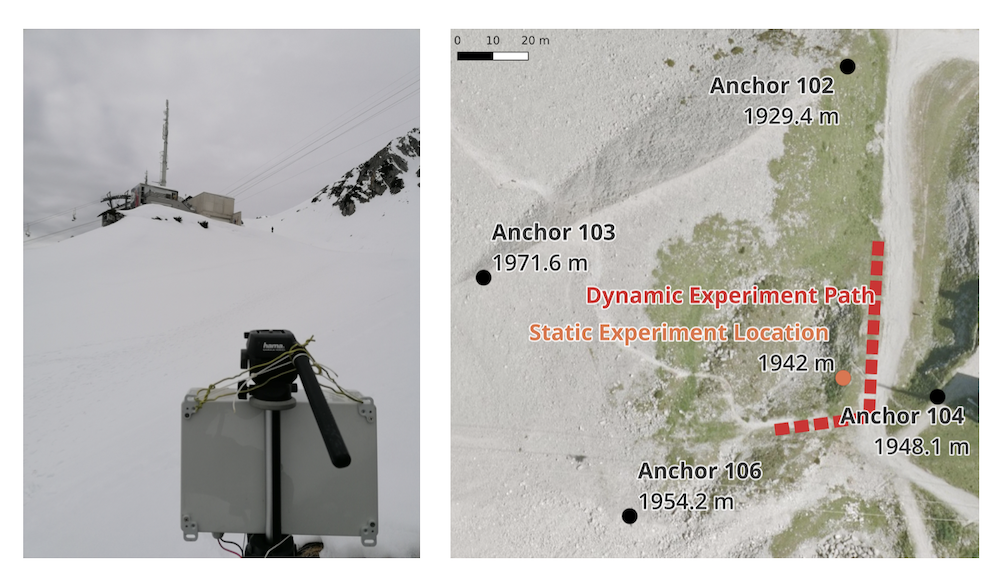
The inner dynamics and transport mechanisms of avalanches - especially on a particle level - remain hidden for most observation approaches. In this paper, we present a particle based, distributed tracking system that is based on ultra-wideband (UWB) ranging and localization. UWB-based positioning is particularly challenging in outdoor scenarios covering large distances in complex topography and fast moving, mobile systems. Our system model considers multiple anchor nodes distributed with inter-node distances in the order of a few hundred meters. Mobile nodes, which move with the avalanche in the field, are tracked via UWB measurements. We present our prototype and demonstrate through first experiments the general feasibility of UWB-based tracking in snow environments.
 Jonas Kuß, Anselm Köhler, Michael Neuhauser, Rene Neurauter, Johannes Gerstmayr, Jan-Thomas Fischer and Falko Dressler, "Distributed UWB-based Ranging for Particle Tracking in Avalanches," Proceedings of 19th IEEE/IFIP Conference on Wireless On demand Network Systems and Services (WONS 2024), Chamonix, France, January 2024, pp. 125–132.
[DOI, BibTeX, PDF, More details]
Jonas Kuß, Anselm Köhler, Michael Neuhauser, Rene Neurauter, Johannes Gerstmayr, Jan-Thomas Fischer and Falko Dressler, "Distributed UWB-based Ranging for Particle Tracking in Avalanches," Proceedings of 19th IEEE/IFIP Conference on Wireless On demand Network Systems and Services (WONS 2024), Chamonix, France, January 2024, pp. 125–132.
[DOI, BibTeX, PDF, More details]
Empowering the 6G Cellular Architecture with Open RAN
December 01, 2023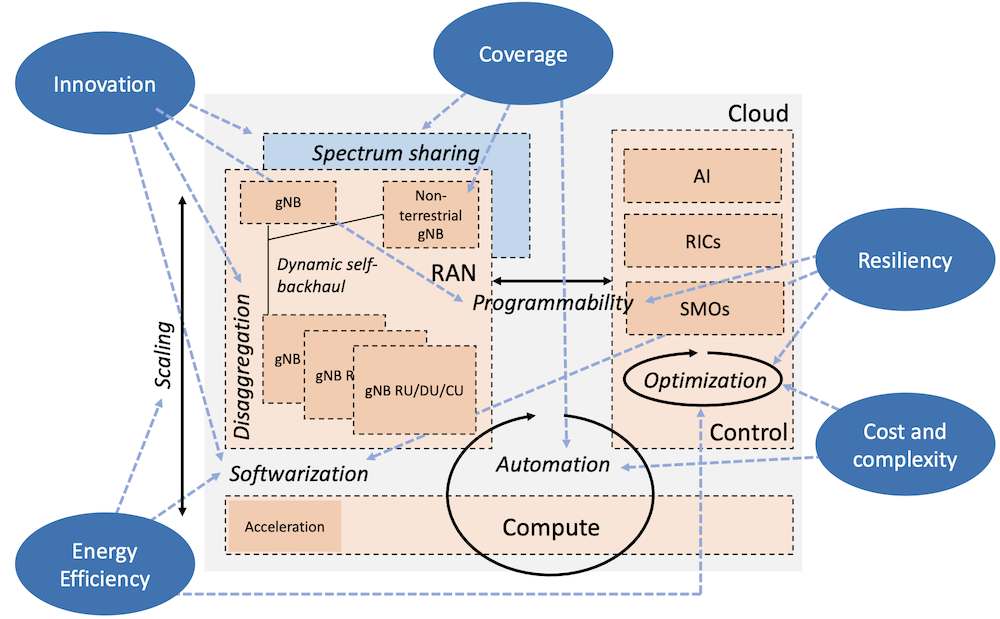
In this paper, we highlight the transformative potential of embracing novel cellular architectures by transitioning from conventional systems to the progressive principles of Open RAN. This promises to make 6G networks more agile, cost-effective, energy-efficient, and resilient. It opens up a plethora of novel use cases, ranging from ubiquitous support for autonomous devices to cost-effective expansions in regions previously underserved. The principles of Open RAN encompass: (i) a disaggregated architecture with modular and standardized interfaces; (ii) cloudification, programmability and orchestration; and (iii) AI-enabled data-centric closed-loop control and automation. We first discuss the transformative role Open RAN principles have played in the 5G era. Then, we adopt a system-level approach and describe how these Open RAN principles will support 6G RAN and architecture innovation. We qualitatively discuss potential performance gains that Open RAN principles yield for specific 6G use cases. For each principle, we outline the steps that research, development and standardization communities ought to take to make Open RAN principles central to next-generation cellular network designs.
 Michele Polese, Mischa Dohler, Falko Dressler, Melike Erol-Kantarci, Rittwik Jana, Raymond Knopp and Tommaso Melodia, "Empowering the 6G Cellular Architecture with Open RAN," IEEE Journal on Selected Areas in Communications, vol. 42 (2), pp. 245–262, February 2024.
[DOI, BibTeX, PDF, More details]
Michele Polese, Mischa Dohler, Falko Dressler, Melike Erol-Kantarci, Rittwik Jana, Raymond Knopp and Tommaso Melodia, "Empowering the 6G Cellular Architecture with Open RAN," IEEE Journal on Selected Areas in Communications, vol. 42 (2), pp. 245–262, February 2024.
[DOI, BibTeX, PDF, More details]
Explainability of Neural Networks for Symbol Detection in Molecular Communication Channels
November 05, 2023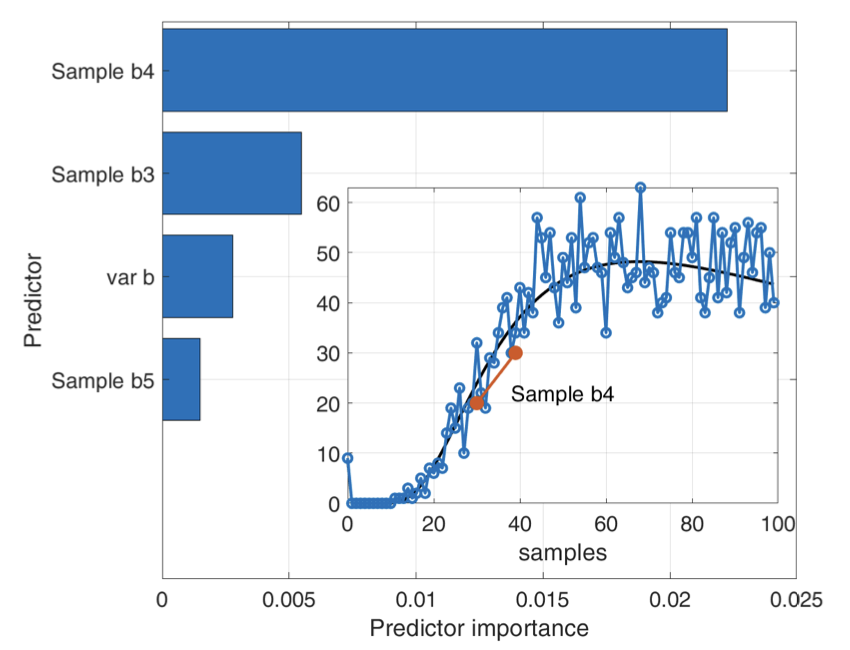
Recent research in molecular communication (MC) suggests machine learning (ML) models for symbol detection, avoiding the unfeasibility of end-to-end channel models. However, ML models are applied as black boxes, lacking proof of correctness of the underlying neural networks (NNs) to detect incoming symbols. This paper studies approaches to the explainability of NNs for symbol detection in MC channels. Based on MC channel models and real testbed measurements, we generate synthesized data and train a neural network (NN) model for the detection of binary transmissions in MC channels. Using the local interpretable model-agnostic explanation (LIME) method and the individual conditional expectation (ICE), the findings in this paper demonstrate the analogy between the trained NN and the standard peak and slope detectors.
 Jorge Torres Gómez, Pit Hofmann, Frank H. P. Fitzek and Falko Dressler, "Explainability of Neural Networks for Symbol Detection in Molecular Communication Channels," IEEE Transactions on Molecular, Biological and Multi-Scale Communications, vol. 9 (3), pp. 323–328, September 2023.
[DOI, BibTeX, PDF, More details]
Jorge Torres Gómez, Pit Hofmann, Frank H. P. Fitzek and Falko Dressler, "Explainability of Neural Networks for Symbol Detection in Molecular Communication Channels," IEEE Transactions on Molecular, Biological and Multi-Scale Communications, vol. 9 (3), pp. 323–328, September 2023.
[DOI, BibTeX, PDF, More details]
Towards the Simulation of WiFi Fine Time Measurements in NS3 Network Simulator
October 19, 2023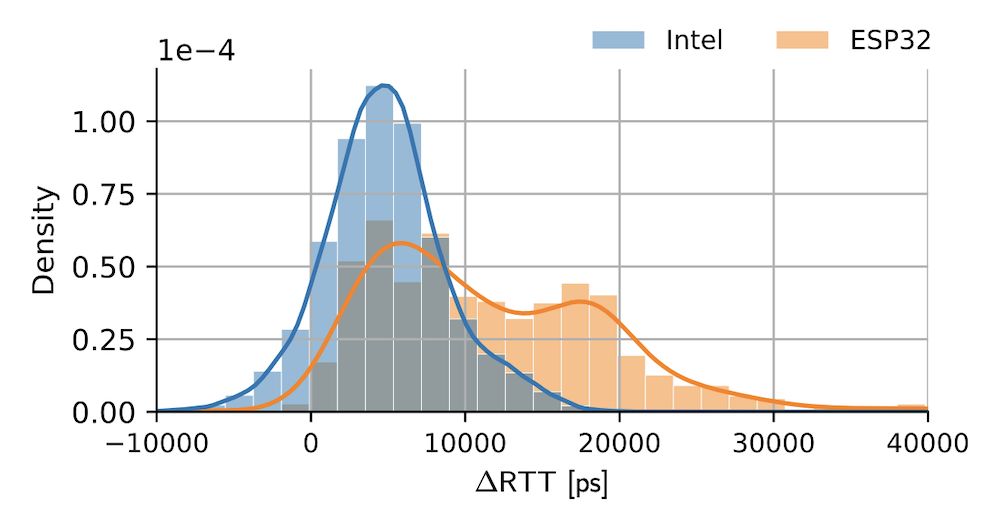
We present FTM-ns3, a software module which implements the 802.11 FTM protocol so that it can be used within the widely used ns3 network simulator. Moreover, we conducted experiments using commodity WiFi-FTM hardware, Intel 8260 and ESP32, and derived empirical error models which can be used in simulations to study the performance of novel FTM-based localization schemes under real channel propagation conditions while taking into account the specifics of the used WiFi hardware and configuration of FTM. Finally, we present results from simulations of a simple localization scheme based on FTM and multilateration which show the great influence of ranging inaccuracy introduced due to multipath propagation in typical indoor environments with line-of-sight (LoS) but strong multipath. Our module is provided to the community as open source and can be easily customized and extended.
 Anatolij Zubow, Christos Laskos and Falko Dressler, "Towards the Simulation of WiFi Fine Time Measurements in NS3 Network Simulator," Elsevier Computer Communications, vol. 210, pp. 35–44, October 2023.
[DOI, BibTeX, More details]
Anatolij Zubow, Christos Laskos and Falko Dressler, "Towards the Simulation of WiFi Fine Time Measurements in NS3 Network Simulator," Elsevier Computer Communications, vol. 210, pp. 35–44, October 2023.
[DOI, BibTeX, More details]
Focusing on Information Context for ITS using a Spatial Age of Information Model
September 26, 2023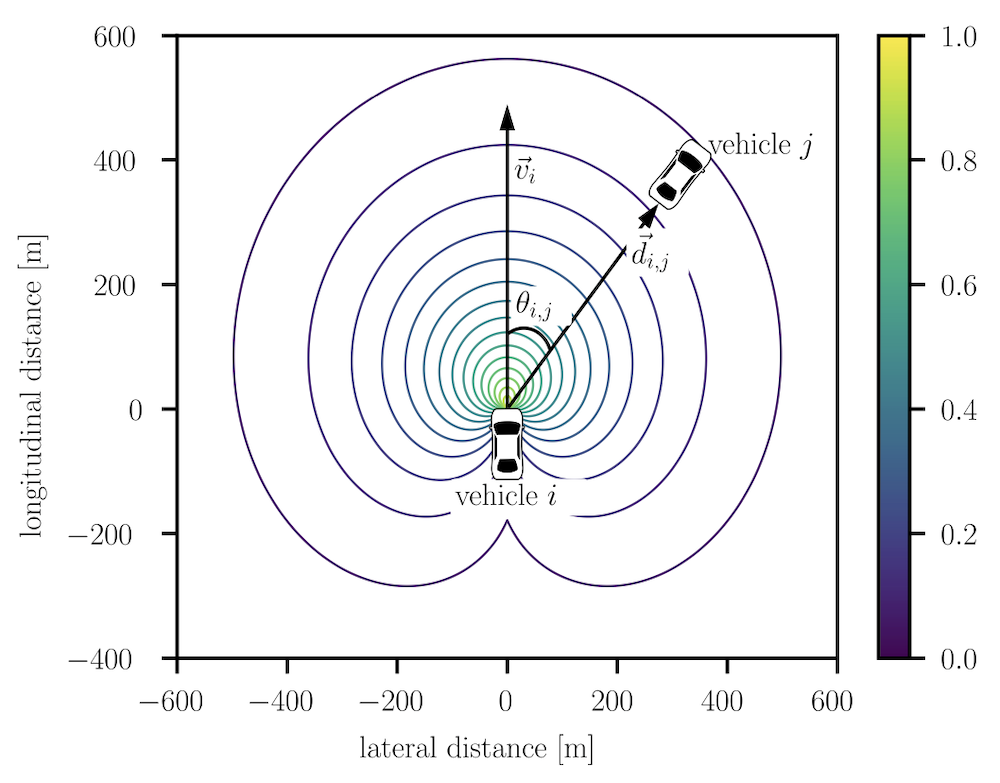
In order to cope with the vehicles’ mobility, such information is required to be as fresh as possible for proper operation of cooperative driving applications. The age of information (AoI) has been proposed as a metric for evaluating freshness of information; recently also within the context of intelligent transportation systems (ITS). We investigate mechanisms to reduce the AoI of data transported in form of beacon messages while controlling their emission rate. We aim to balance packet collision probability and beacon frequency using the average peak age of information (PAoI) as a metric. We propose a new way of interpreting the AoI by considering information context, thereby incorporating vehicles’ locations. As an example, we characterize such importance using the orientation and the distance of the involved vehicles.
 Julian Heinovski, Jorge Torres Gómez and Falko Dressler, "Focusing on Information Context for ITS using a Spatial Age of Information Model," Elsevier Computer Communications, vol. 209, pp. 203–216, September 2023.
[DOI, BibTeX, PDF, More details]
Julian Heinovski, Jorge Torres Gómez and Falko Dressler, "Focusing on Information Context for ITS using a Spatial Age of Information Model," Elsevier Computer Communications, vol. 209, pp. 203–216, September 2023.
[DOI, BibTeX, PDF, More details]
TCOA: Triple-Check Offloading Algorithm for Roadside Units and Vehicular Microclouds in 5G Networks and Beyond
August 26, 2023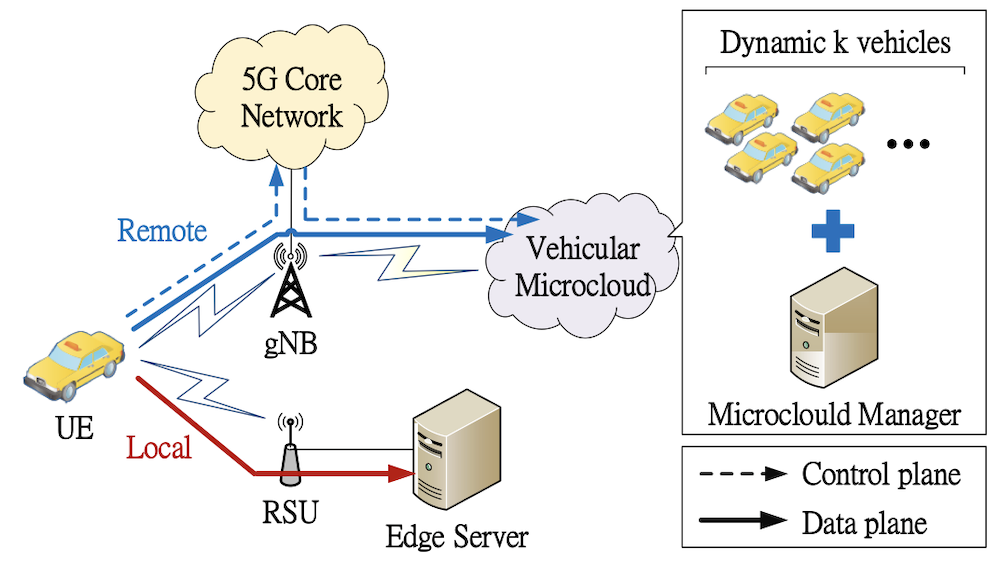
Next-generation intelligent transportation systems aim to achieve many cooperative perception and cooperative driving functions requiring considerable computational resources. Offloading such tasks via mobile edge computing is considered part of the solution and is currently being investigated in the scope of 5G networks and beyond. In this study, we propose an offloading system architecture to enable such offloading in a vehicular microcloud interconnected by a 5G core network. We model the system as a queueing model to derive closed-form solutions for selected performance metrics. Based on these insights, we propose the triple-check offloading algorithm (TCOA) to obtain both the best offloading ratio to the vehicular microcloud and the optimal maximum of the remaining vehicle instances in the vehicular microcloud. Our simulation results show that the proposed TCOA has better system performance than four other offloading schemes in terms of cost, response time, service rate, and cost response-time production service rate division (CRPSD).
 Bo-Jun Qiu, Cheng-Ying Hsieh, Jyh-Cheng Chen and Falko Dressler, "TCOA: Triple-Check Offloading Algorithm for Roadside Units and Vehicular Microclouds in 5G Networks and Beyond," IEEE Access, vol. 11, pp. 84985–85001, August 2023.
[DOI, BibTeX, PDF, More details]
Bo-Jun Qiu, Cheng-Ying Hsieh, Jyh-Cheng Chen and Falko Dressler, "TCOA: Triple-Check Offloading Algorithm for Roadside Units and Vehicular Microclouds in 5G Networks and Beyond," IEEE Access, vol. 11, pp. 84985–85001, August 2023.
[DOI, BibTeX, PDF, More details]
Optimizing Terahertz Communication Between Nanosensors in the Human Cardiovascular System and External Gateways
July 21, 2023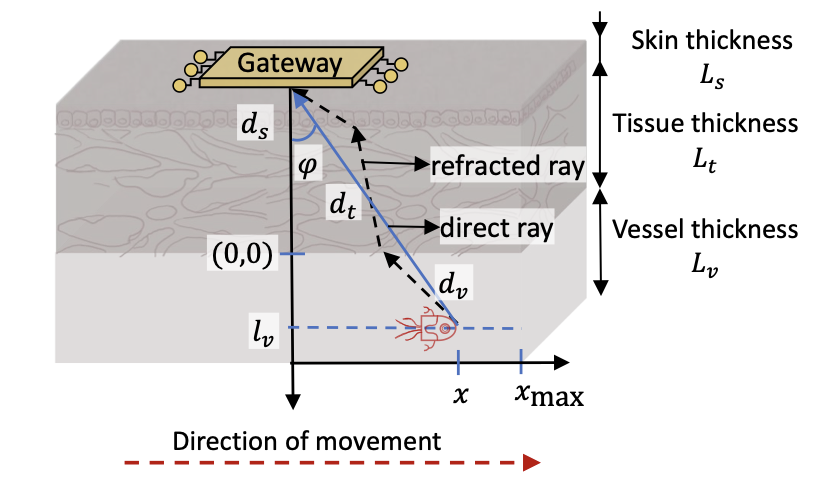
This paper studies the intra-body communication channel between nanosensors flowing in the bloodstream and gateways attached to the skin using the terahertz (THz) spectrum. The channel model considers three layers through which the waveform travels: skin, tissue, and blood. To optimize the communication performance, this work investigates the impact of noise and mobility, and subsequently derives the trade-off between them. We illustrate the achievable bit error rate (BER) for THz intra-body channels considering communication through human tissue layers, including noise and random mobility of nanosensors in the blood system.
 Jorge Torres Gómez, Jennifer Simonjan, Josep Miquel Jornet and Falko Dressler, "Optimizing Terahertz Communication Between Nanosensors in the Human Cardiovascular System and External Gateways," IEEE Communications Letters, vol. 27 (9), pp. 2318–2322, September 2023.
[DOI, BibTeX, PDF, More details]
Jorge Torres Gómez, Jennifer Simonjan, Josep Miquel Jornet and Falko Dressler, "Optimizing Terahertz Communication Between Nanosensors in the Human Cardiovascular System and External Gateways," IEEE Communications Letters, vol. 27 (9), pp. 2318–2322, September 2023.
[DOI, BibTeX, PDF, More details]
Centralized Model-Predictive Control with Human-Driver Interaction for Platooning
June 11, 2023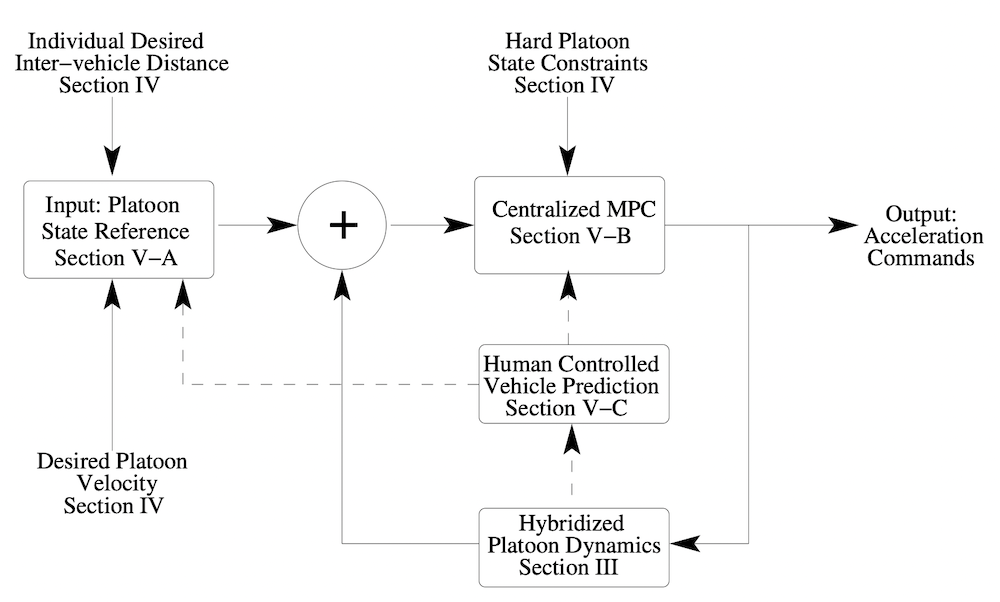
Cooperative adaptive cruise control presents an opportunity to improve road transportation through increase in road capacity and reduction in energy use and accidents. In this paper, we propose a centralized model predictive controller for a heterogeneous platoon of vehicles to reach a desired platoon velocity and individual inter-vehicle distances with driver-selected headway time. As a novel concept, we allow for interruption from a human driver in the platoon that temporarily takes control of their vehicle with the assumption that the driver will, at minimum, obey legal velocity limits and the physical performance constraints of their vehicle. The finite horizon cost function of our proposed platoon controller is inspired from the infinite horizon design. To the best of our knowledge, this is the first platoon controller that integrates human-driven vehicles. We illustrate the performance of our proposed design with a numerical study, demonstrating that the safety distance, velocity, and actuation constraints are obeyed.
 Justin M. Kennedy, Julian Heinovski, Daniel E. Quevedo and Falko Dressler, "Centralized Model-Predictive Control with Human-Driver Interaction for Platooning," IEEE Transactions on Vehicular Technology, vol. 72 (10), pp. 12664–12680, October 2023.
[DOI, BibTeX, PDF, More details]
Justin M. Kennedy, Julian Heinovski, Daniel E. Quevedo and Falko Dressler, "Centralized Model-Predictive Control with Human-Driver Interaction for Platooning," IEEE Transactions on Vehicular Technology, vol. 72 (10), pp. 12664–12680, October 2023.
[DOI, BibTeX, PDF, More details]
Age of Information-based Performance of Ultrasonic Communication Channels for Nanosensor-to-Gateway Communication
May 09, 2023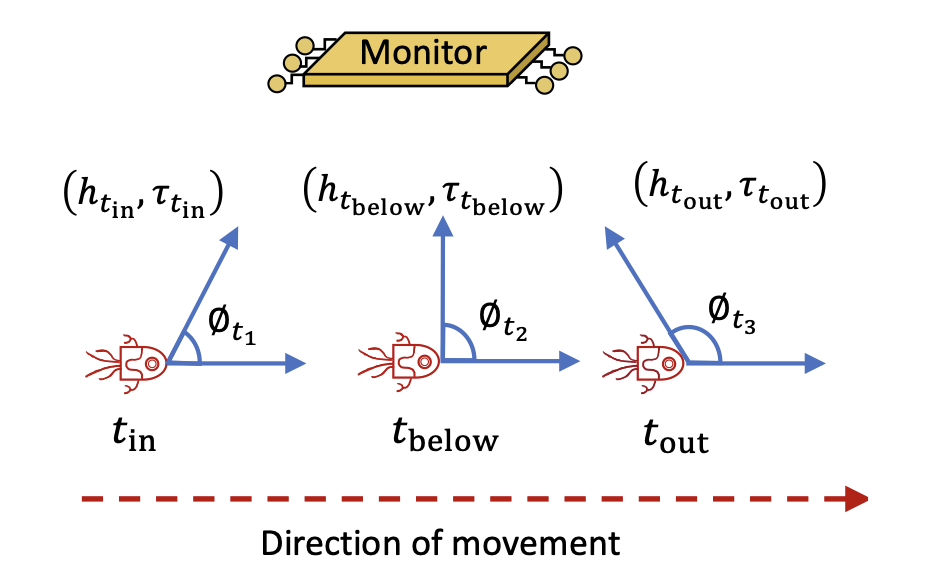
We investigate the timely detection of abnormalities using nanosensors flowing in the blood vessels and reporting to external wearable devices. We develop analytic solutions to evaluate the information freshness using the average peak age of information (PAoI) metric. We model the mobility of nanosensors in the blood flow as a random process through a Markov chain. The communication capabilities with external devices to report detected abnormalities are modeled as a linear time-variant (LTV) channel. Besides, for communication with external devices, we study the impact of the mobility of nanosensors when using ultrasonic waveforms and integrate it with the PAoI formulation. As primary metrics, we use the bit error rate (BER), the packet error rate (PER), and the average PAoI. The results give clear insights into the impact of the position of the external monitor. We also illustrate that local communication performance almost does not influence the average PAoI.
 Jorge Torres Gómez, Joana Angjo and Falko Dressler, "Age of Information-based Performance of Ultrasonic Communication Channels for Nanosensor-to-Gateway Communication," IEEE Transactions on Molecular, Biological and Multi-Scale Communications, vol. 9 (2), pp. 112–123, June 2023.
[DOI, BibTeX, PDF, More details]
Jorge Torres Gómez, Joana Angjo and Falko Dressler, "Age of Information-based Performance of Ultrasonic Communication Channels for Nanosensor-to-Gateway Communication," IEEE Transactions on Molecular, Biological and Multi-Scale Communications, vol. 9 (2), pp. 112–123, June 2023.
[DOI, BibTeX, PDF, More details]
Data Sharing in Virtual Edge Computing using Coded Caching
April 30, 2023
Multi-access edge computing (MEC) has been identified as a powerful concept for offloading computational tasks and for storing popular data in close proximity of end users; avoiding frequent communication to a back-end cloud server. In the context of vehicular applications, similar functionality can be provided by vehicles collaboratively offering storage and computational resources on-board, i.e., a virtual MEC concept. Data management in a virtual edge is particularly challenging due to the high degree of mobility. Coded caching is a concept to store data on distributed systems in form of fragments. When needed, these fragments are transmitted to the requesting node in a coded form so that the total number of transmissions is reduced (i.e., optimizing for reduced download times and reduced resource utilization). In this paper, we introduce a new protocol for data sharing among vehicles participating in virtual edge computing using coded caching. Our results show that coded caching improve the efficiency of data sharing by up to 50% in a virtual edge computing environment.
 Gurjashan Singh Pannu, Seyhan Ucar, Takamasa Higuchi, Onur Altintas and Falko Dressler, "Data Sharing in Virtual Edge Computing using Coded Caching," Proceedings of 14th IEEE Vehicular Networking Conference (VNC 2023), Istanbul, Turkey, April 2023, pp. 104–111.
[DOI, BibTeX, PDF, More details]
Gurjashan Singh Pannu, Seyhan Ucar, Takamasa Higuchi, Onur Altintas and Falko Dressler, "Data Sharing in Virtual Edge Computing using Coded Caching," Proceedings of 14th IEEE Vehicular Networking Conference (VNC 2023), Istanbul, Turkey, April 2023, pp. 104–111.
[DOI, BibTeX, PDF, More details]
Digital Communication Techniques in Macroscopic Air-Based Molecular Communication
March 16, 2023
An air-based macroscopic molecular communication testbed exploiting fluorescence properties of water-based solutions of Uranine and Rhodamine 6G dyes is presented in this work. The testbed comprises of an industrial sprayer as its transmitter, a 2 m long tube as the transmission channel, and a high-speed camera-based detector. The considered transmission distances cover a range over several tens of centimeters to meters. The analytical end-to-end system model is extended to include the noise model in this work. Various modulation schemes exploiting the concentration levels of the sprayed dyes as the information source have been implemented and their performances are compared to the standard on-off keying. Spatial domain, along with the concentration of the dyes has been introduced as an additional degree of freedom into the testbed to improve the bit rate, and the performance is compared with respect to those modulation schemes using color and concentration levels of the dyes as degrees of freedom. Various equalization techniques and detection algorithms have also been implemented and compared. All comparative analyses are performed with respect to the measurements obtained from the testbed, the analytical models, and the particle-based Pogona simulator.
 Sunasheer Bhattacharjee, Martin Damrath, Lukas Stratmann, Peter Adam Hoeher and Falko Dressler, "Digital Communication Techniques in Macroscopic Air-Based Molecular Communication," IEEE Transactions on Molecular, Biological and Multi-Scale Communications, vol. 8 (4), pp. 276–291, December 2022.
[DOI, BibTeX, PDF, More details]
Sunasheer Bhattacharjee, Martin Damrath, Lukas Stratmann, Peter Adam Hoeher and Falko Dressler, "Digital Communication Techniques in Macroscopic Air-Based Molecular Communication," IEEE Transactions on Molecular, Biological and Multi-Scale Communications, vol. 8 (4), pp. 276–291, December 2022.
[DOI, BibTeX, PDF, More details]
ViTaLS - A Novel Link-Layer Scheduling Framework for Tactile Internet over Wi-Fi
February 16, 2023
The pioneering field of Tactile Internet (TI) will enable the transfer of human skills over long distances through haptic feedback. Realizing this demands a roundtrip latency of sub-5 ms. we propose Video-Tactile Latency Scheduler (ViTaLS) - a novel link layer framework for tuning the video-tactile frame transmissions to suit their heterogeneous QoS requirements. We also present ViTaLS-optimal - a variant of ViTaLS, for further reducing the tactile latency. Objectively, we show that ViTaLS-optimal yields a latency improvement of up to 82 %. Based on experiments conducted on a real TI testbed, we subjectively demonstrate that ViTaLS-optimal outperforms the VH-multiplexer.
 Vineet Gokhale, Kees Kroep, R. Venkatesha Prasad, Boris Bellalta and Falko Dressler, "ViTaLS - A Novel Link-Layer Scheduling Framework for Tactile Internet over Wi-Fi," IEEE Internet of Things Journal, vol. 10 (11), pp. 9917–9927, June 2023.
[DOI, BibTeX, More details]
Vineet Gokhale, Kees Kroep, R. Venkatesha Prasad, Boris Bellalta and Falko Dressler, "ViTaLS - A Novel Link-Layer Scheduling Framework for Tactile Internet over Wi-Fi," IEEE Internet of Things Journal, vol. 10 (11), pp. 9917–9927, June 2023.
[DOI, BibTeX, More details]
When Internet of Things meets Metaverse: Convergence of Physical and Cyber Worlds
January 07, 2023
This survey introduces six typical IoT applications in the Metaverse, including collaborative healthcare, education, smart city, entertainment, real estate, and socialization. In the IoT-inspired Metaverse, we also comprehensively survey four pillar technologies that enable augmented reality (AR) and virtual reality (VR), namely, responsible artificial intelligence (AI), high-speed data communications, cost-effective mobile edge computing (MEC), and digital twins. According to the physical-world demands, we outline the current industrial efforts and seven key requirements for building the IoT-inspired Metaverse: immersion, variety, economy, civility, interactivity, authenticity, and independence.
 Kai Li, Yingping Cui, Weicai Li, Tiejun Lv, Xin Yuan, Shenghong Li, Wei Ni, Meryem Simsek and Falko Dressler, "When Internet of Things meets Metaverse: Convergence of Physical and Cyber Worlds," IEEE Internet of Things Journal, vol. 10 (5), pp. 4148–4173, March 2023.
[DOI, BibTeX, PDF, More details]
Kai Li, Yingping Cui, Weicai Li, Tiejun Lv, Xin Yuan, Shenghong Li, Wei Ni, Meryem Simsek and Falko Dressler, "When Internet of Things meets Metaverse: Convergence of Physical and Cyber Worlds," IEEE Internet of Things Journal, vol. 10 (5), pp. 4148–4173, March 2023.
[DOI, BibTeX, PDF, More details]
Improving IEEE 802.11ax UORA Performance: Comparison of Reinforcement Learning and Heuristic Approaches
December 15, 2022
In the Wi-Fi domain, machine learing (ML) is applied to solve challenges such as efficient channel access and fair coexistence with other technologies in unlicensed bands. In this paper, we address the performance of uplink orthogonal frequency division multiple random access (UORA) in IEEE 802.11ax networks. Optimization of UORA is a good case for applying ML because of its inherent complexity and dependence on situation and time-dependent parameters. In particular, we use deep reinforcement learning to tune UORA parameters. Our simulation results show that even though the ML-based solution leads to close to optimal results, its operation is comparable to a much simpler, non-ML heuristic.
 Katarzyna Kosek-Szott, Szymon Szott and Falko Dressler, "Improving IEEE 802.11ax UORA Performance: Comparison of Reinforcement Learning and Heuristic Approaches," IEEE Access, vol. 10, pp. 120285–120295, November 2022.
[DOI, BibTeX, PDF, More details]
Katarzyna Kosek-Szott, Szymon Szott and Falko Dressler, "Improving IEEE 802.11ax UORA Performance: Comparison of Reinforcement Learning and Heuristic Approaches," IEEE Access, vol. 10, pp. 120285–120295, November 2022.
[DOI, BibTeX, PDF, More details]
Nanosensor Location Estimation in the Human Circulatory System using Machine Learning
November 19, 2022
The human body can be considered a complex natural network due to the variety of interconnections between the different body regions. One example is the network of blood vessels, where artificial communication channels can be rendered using nanosensors that travel in the bloodstream as collectors and carriers of information. Further advancing this vision, in this work we investigate the detection and localization capabilities of flowing nanosensors in the blood flow to report abnormalities in the human body. Specifically, we target the detection of quorum sensing molecules and provide a methodology to evaluate its performance. The methodology consists of modeling the traveling path of nanosensors along the vessels through a Markov chain, and the use of machine learning (ML) models to compute their transition probabilities.
 Jorge Torres Gómez, Anke Kuestner, Jennifer Simonjan, Bige Deniz Unluturk and Falko Dressler, "Nanosensor Location Estimation in the Human Circulatory System using Machine Learning," IEEE Transactions on Nanotechnology, vol. 21, pp. 663–673, October 2022.
[DOI, BibTeX, PDF, More details]
Jorge Torres Gómez, Anke Kuestner, Jennifer Simonjan, Bige Deniz Unluturk and Falko Dressler, "Nanosensor Location Estimation in the Human Circulatory System using Machine Learning," IEEE Transactions on Nanotechnology, vol. 21, pp. 663–673, October 2022.
[DOI, BibTeX, PDF, More details]
Low-power and Low-delay WLAN using Wake-up Receivers
October 17, 2022
Energy-efficient communication technologies are a key enabler for many IoT applications. We investigate the use of wake-up receivers in combination with IEEE 802.11 WLAN. We extend the protocol used to communicate between the access point and the client to introduce a wake-up signal. This can be implemented in a way that is fully compatible with existing WLAN standards, thus, it can be deployed gradually with little effort and no need to change existing systems. As a proof of concept and to perform first lab experiments, we developed a hardware prototype using a selective wake-up receiver and off-the-shelf USB-WLAN dongles.
 Johannes Blobel, Florian Menne, Dongxiao Yu, Xiuzhen Cheng and Falko Dressler, "Low-power and Low-delay WLAN using Wake-up Receivers," IEEE Transactions on Mobile Computing, vol. 21 (5), pp. 1739–1750, May 2022.
[DOI, BibTeX, PDF, More details]
Johannes Blobel, Florian Menne, Dongxiao Yu, Xiuzhen Cheng and Falko Dressler, "Low-power and Low-delay WLAN using Wake-up Receivers," IEEE Transactions on Mobile Computing, vol. 21 (5), pp. 1739–1750, May 2022.
[DOI, BibTeX, PDF, More details]
Asynchronous Background Processing for Accelerated Simulation of Wireless Communication on Multi-Core Systems
September 21, 2022
Most popular discrete event simulation software packages run single-threaded. Thus, they achieve only limited performance improvements from more modern multi-core CPUs. At the same time, existing approaches for parallel simulation of networks do not perform well on wireless systems or require complex paradigm shifts in simulation models. In this paper, we propose Asynchronous Background Processing (ABP) to accelerate the simulation of wireless communication on multi-core systems. By moving expensive computation from the main thread into asynchronous tasks computed by background threads, it accelerates the progression of events and thus reduces response time. Tasks are started as early as possible to exploit the time the main thread spends processing other events, ideally providing results before they are needed in the simulation.
 Dominik S. Buse, Georg Echterling and Falko Dressler, "Asynchronous Background Processing for Accelerated Simulation of Wireless Communication on Multi-Core Systems," Elsevier Computer Communications, vol. 193, pp. 396–409, September 2022.
[DOI, BibTeX, PDF, More details]
Dominik S. Buse, Georg Echterling and Falko Dressler, "Asynchronous Background Processing for Accelerated Simulation of Wireless Communication on Multi-Core Systems," Elsevier Computer Communications, vol. 193, pp. 396–409, September 2022.
[DOI, BibTeX, PDF, More details]
Adaptive Blind MPSK Constellation Recovery and Equalization for Cognitive Radio Applications
August 16, 2022
This work proposes a novel single-step blind adaptive filter solution, inspired by an adaptive interference canceler, for joint equalization and constellation symbol recovery from received phase shift keying (PSK) waveforms. Furthermore, we propose new coefficients update mechanisms based on the constant amplitude of PSK signals. The proposed solution exhibits reduced computational complexity compared to the state of the art and a reduced time of convergence. Additionally, the proposed scheme does not require a training sequence to operate properly. The obtained results clearly show that the proposed scheme significantly improves accuracy regarding phase symbol estimation and ISI reduction.
 Liset Martínez Marrero, Jorge Torres Gómez, Falko Dressler and Maria Julia Fernández-Getino García, "Adaptive Blind MPSK Constellation Recovery and Equalization for Cognitive Radio Applications," IEEE Transactions on Vehicular Technology, vol. 71 (11), pp. 11988–12000, November 2022.
[DOI, BibTeX, PDF, More details]
Liset Martínez Marrero, Jorge Torres Gómez, Falko Dressler and Maria Julia Fernández-Getino García, "Adaptive Blind MPSK Constellation Recovery and Equalization for Cognitive Radio Applications," IEEE Transactions on Vehicular Technology, vol. 71 (11), pp. 11988–12000, November 2022.
[DOI, BibTeX, PDF, More details]
Siting and Sizing Charging Infrastructure for Electric Vehicles with Coordinated Recharging
July 29, 2022
We analyze daily schedules of drivers to find suitable locations for slow and fast charging stations. In simulation, we test how many charge points to assign to each charging station. Vehicles can be charged with either en-route or destination charging using a realistic model for charging and energy consumption for five electric vehicle models of different car segments. To reduce waiting times at charging stations, we use a centralized charging station database (CSDB), that coordinates charging between vehicles. We found that a combination of a few centralized fast charging stations and many distributed slow charging stations is the best option to improve the average extra time spent with charging for all vehicle types.
 Sven Schoenberg, Dominik S. Buse and Falko Dressler, "Siting and Sizing Charging Infrastructure for Electric Vehicles with Coordinated Recharging," IEEE Transactions on Intelligent Vehicles, vol. 8 (2), pp. 1425–1438, February 2023.
[DOI, BibTeX, PDF, More details]
Sven Schoenberg, Dominik S. Buse and Falko Dressler, "Siting and Sizing Charging Infrastructure for Electric Vehicles with Coordinated Recharging," IEEE Transactions on Intelligent Vehicles, vol. 8 (2), pp. 1425–1438, February 2023.
[DOI, BibTeX, PDF, More details]
Wi-Fi Meets ML: A Survey on Improving IEEE 802.11 Performance with Machine Learning
June 06, 2022
The Wi-Fi community is currently deploying Wi-Fi 6 and developing Wi-Fi 7, which will bring higher data rates, better multi-user and multi-AP support, and, most importantly, improved configuration flexibility. These technical innovations, including the plethora of configuration parameters, are making next-generation WLANs exceedingly complex as the dependencies between parameters and their joint optimization usually have a non-linear impact on network performance. While classical optimization approaches fail in such conditions, machine learning (ML) is able to handle complexity. Much research has been published on using ML to improve Wi-Fi performance and solutions are slowly being adopted in existing deployments. In this survey, we investigate proposed solutions and highlight open challenges in the field of ML for Wi-Fi.
 Szymon Szott, Katarzyna Kosek-Szott, Piotr Gawłowicz, Jorge Torres Gómez, Boris Bellalta, Anatolij Zubow and Falko Dressler, "Wi-Fi Meets ML: A Survey on Improving IEEE 802.11 Performance with Machine Learning," IEEE Communications Surveys & Tutorials, vol. 24 (3), pp. 1843–1893, July 2022.
VDE ITG Preis 2023 [DOI, BibTeX, PDF, More details]
Szymon Szott, Katarzyna Kosek-Szott, Piotr Gawłowicz, Jorge Torres Gómez, Boris Bellalta, Anatolij Zubow and Falko Dressler, "Wi-Fi Meets ML: A Survey on Improving IEEE 802.11 Performance with Machine Learning," IEEE Communications Surveys & Tutorials, vol. 24 (3), pp. 1843–1893, July 2022.
VDE ITG Preis 2023 [DOI, BibTeX, PDF, More details]
V-Edge: Virtual Edge Computing as an Enabler for Novel Microservices and Cooperative Computing
May 05, 2022
As we move from 5G to 6G, edge computing is one of the concepts that needs revisiting. In this position paper, we discuss a way forward, namely the virtual edge computing (V-Edge) concept. V-Edge helps bridging the gap between cloud, edge, and fog by virtualizing all available resources including the end users' devices and making these resources widely available. Thus, V-Edge acts as an enabler for novel microservices as well as cooperative computing solutions in next-generation networks. We introduce the general V-Edge architecture and we characterize some of the key research challenges to overcome in order to enable wide-spread and intelligent edge services.
 Falko Dressler, Carla Fabiana Chiasserini, Frank H. P. Fitzek, Holger Karl, Renato Lo Cigno, Antonio Capone, Claudio Ettore Casetti, Francesco Malandrino, Vincenzo Mancuso, Florian Klingler and Gianluca Antonio Rizzo, "V-Edge: Virtual Edge Computing as an Enabler for Novel Microservices and Cooperative Computing," IEEE Network, vol. 36 (3), pp. 24–31, May 2022.
[DOI, BibTeX, PDF, More details]
Falko Dressler, Carla Fabiana Chiasserini, Frank H. P. Fitzek, Holger Karl, Renato Lo Cigno, Antonio Capone, Claudio Ettore Casetti, Francesco Malandrino, Vincenzo Mancuso, Florian Klingler and Gianluca Antonio Rizzo, "V-Edge: Virtual Edge Computing as an Enabler for Novel Microservices and Cooperative Computing," IEEE Network, vol. 36 (3), pp. 24–31, May 2022.
[DOI, BibTeX, PDF, More details]
Hybrid-Fidelity: Utilizing IEEE 802.11 MIMO forPractical Aggregation of LiFi and WiFi
March 23, 2022
This paper introduces Hy-Fi, a system that aggregates light fidelity (LiFi) and radio frequency (RF)-based communication on the 802.11 (WiFi) physical layer by utilizing the MIMO capabilities in IEEE 802.11-compliant commodity WiFi chips. Hy-Fi is based on two key ideas. First, we use inexpensive commodity hardware to facilitate direct transmission of WiFi waveforms over the optical wireless channel, as this is proposed in the IEEE P802.11bb task group. Second, we use the MIMO signal processing from WiFi to aggregate LiFi and radio signals directly at the physical layer.
 Anatolij Zubow, Piotr Gawłowicz, Carolin Brunn, Kai Lennert Bober, Volker Jungnickel, Kai Habel and Falko Dressler, "Hybrid-Fidelity: Utilizing IEEE 802.11 MIMO for Practical Aggregation of LiFi and WiFi," IEEE Transactions on Mobile Computing, vol. 22 (8), pp. 4682–4697, August 2023.
[DOI, BibTeX, More details]
Anatolij Zubow, Piotr Gawłowicz, Carolin Brunn, Kai Lennert Bober, Volker Jungnickel, Kai Habel and Falko Dressler, "Hybrid-Fidelity: Utilizing IEEE 802.11 MIMO for Practical Aggregation of LiFi and WiFi," IEEE Transactions on Mobile Computing, vol. 22 (8), pp. 4682–4697, August 2023.
[DOI, BibTeX, More details]
Multi-Technology Cooperative Driving: An Analysis Based on PLEXE
February 28, 2022
This work tackles the fallback and recovery mechanisms that the longitudinal controlling system of a platoon of vehicles can implement as a distributed system with multiple communication interfaces. We present a protocol and procedure to correctly compute the safe transition between different controlling algorithms, down to autonomous (or manual) driving when no communication is possible. To empower the study, we also develop a new version of PLEXE, which is an integral part of this contribution as the only Open Source, free simulation tool that enables the study of such systems with a modular approach, and that we deem offers the community the possibility of boosting research in this field.
 Michele Segata, Renato Lo Cigno, Tobias Hardes, Julian Heinovski, Max Schettler, Bastian Bloessl, Christoph Sommer and Falko Dressler, "Multi-Technology Cooperative Driving: An Analysis Based on PLEXE," IEEE Transactions on Mobile Computing, vol. 22 (8), pp. 4792–4806, August 2023.
[DOI, BibTeX, More details]
Michele Segata, Renato Lo Cigno, Tobias Hardes, Julian Heinovski, Max Schettler, Bastian Bloessl, Christoph Sommer and Falko Dressler, "Multi-Technology Cooperative Driving: An Analysis Based on PLEXE," IEEE Transactions on Mobile Computing, vol. 22 (8), pp. 4792–4806, August 2023.
[DOI, BibTeX, More details]
Reducing Waiting Times at Charging Stations with Adaptive Electric Vehicle Route Planning
January 13, 2022
Electric vehicles are becoming more popular all over the world. With increasing battery capacities and a growing fast-charging infrastructure, they are becoming suitable for long-distance travel. However, queues at charging stations could lead to long waiting times, making efficient route planning even more important. We propose a central charging station database (CSDB) that helps estimating waiting times at charging stations ahead of time. This enables our adaptive charging and routing strategy to reduce these waiting times.
 Sven Schoenberg and Falko Dressler, "Reducing Waiting Times at Charging Stations with Adaptive Electric Vehicle Route Planning," IEEE Transactions on Intelligent Vehicles (T-IV), vol. 8 (1), pp. 95–107, January 2023.
[DOI, BibTeX, More details]
Sven Schoenberg and Falko Dressler, "Reducing Waiting Times at Charging Stations with Adaptive Electric Vehicle Route Planning," IEEE Transactions on Intelligent Vehicles (T-IV), vol. 8 (1), pp. 95–107, January 2023.
[DOI, BibTeX, More details]
Dwell Time Estimation at Intersections for Improved Vehicular Micro Cloud Operations
December 14, 2021
The idea of vehicular micro clouds is to turn cars into (virtual) edge computing infrastructure. One of the challenging questions in this domain is to maintain data within and among such micro clouds. In this paper, we focus on this task and present a novel solution for such data exchange between vehicular micro clouds. For efficient operation, the dwell times of cars in such a micro cloud need to be known or accurately predicted. In an extensive study based on trace data, we investigate the distribution of dwell times of cars at intersections.
 Gurjashan Singh Pannu, Seyhan Ucar, Takamasa Higuchi, Onur Altintas and Falko Dressler, "Dwell Time Estimation at Intersections for Improved Vehicular Micro Cloud Operations," Elsevier Ad Hoc Networks, vol. 122, pp. 102606, November 2021.
[DOI, BibTeX, PDF, More details]
Gurjashan Singh Pannu, Seyhan Ucar, Takamasa Higuchi, Onur Altintas and Falko Dressler, "Dwell Time Estimation at Intersections for Improved Vehicular Micro Cloud Operations," Elsevier Ad Hoc Networks, vol. 122, pp. 102606, November 2021.
[DOI, BibTeX, PDF, More details]
Vehicular Visible Light Communications: A Survey
November 15, 2021
In this survey article, we study the state of the art of Vehicular Visible Light Communication (V-VLC) and identify open issues and challenges. We study the V-VLC communication system as a whole and also dig into the characteristics of the VLC channel. For the beginner in the field, this review acts as a guide to the most relevant literature to quickly catch up with current trends and achievements. For the expert, we identify open research questions and also introduce the V-VLC research community as a whole.
 Agon Memedi and Falko Dressler, "Vehicular Visible Light Communications: A Survey," IEEE Communications Surveys & Tutorials, vol. 23 (1), pp. 161–181, January 2021.
[DOI, BibTeX, PDF, More details]
Agon Memedi and Falko Dressler, "Vehicular Visible Light Communications: A Survey," IEEE Communications Surveys & Tutorials, vol. 23 (1), pp. 161–181, January 2021.
[DOI, BibTeX, PDF, More details]
LSTM-characterized Deep Reinforcement Learning for Continuous Flight Control and Resource Allocation in UAV-assisted Sensor Network
October 31, 2021
This paper proposes a new deep reinforcement learning based flight resource allocation framework (DeFRA) to minimize the overall data packet loss in a continuous action space. DeFRA is based on Deep Determin- istic Policy Gradient (DDPG), optimally controls instantaneous headings and speeds of the UAV, and selects the ground device for data collection. Furthermore, a state characterization layer, leveraging long short-term memory (LSTM), is developed to predict network dynamics, resulting from time-varying airborne channels and energy arrivals at the ground devices.
 Kai Li, Wei Ni and Falko Dressler, "LSTM-characterized Deep Reinforcement Learning for Continuous Flight Control and Resource Allocation in UAV-assisted Sensor Network," IEEE Internet of Things Journal, August 2021. (online first)
[DOI, BibTeX, More details]
Kai Li, Wei Ni and Falko Dressler, "LSTM-characterized Deep Reinforcement Learning for Continuous Flight Control and Resource Allocation in UAV-assisted Sensor Network," IEEE Internet of Things Journal, August 2021. (online first)
[DOI, BibTeX, More details]
Duality between Coronavirus Transmission and Air-based Macroscopic Molecular Communication
September 20, 2021
This paper exploits the duality between aviral infection process and macroscopic air-based molecularcommunication. Airborne aerosol and droplet transmission through human respiratory processes is modeled as an instance of a multiuser molecular communication scenario employing respiratory-event-driven molecular variable-concentration shift keying. Modeling is aided by experiments that are motivated by a macroscopic air-based molecular communication testbed. In artificially induced coughs, a saturated aqueous solution containing a fluorescent dye mixed with saliva is released by an adult test person. We confirmed the experimental data by simulation.
 Max Schurwanz, Peter Adam Hoeher, Sunasheer Bhattacharjee, Martin Damrath, Lukas Stratmann and Falko Dressler, "Duality between Coronavirus Transmission and Air-based Macroscopic Molecular Communication," IEEE Transactions on Molecular, Biological and Multi-Scale Communications, Infectious Diseases Special Issue, vol. 7 (3), pp. 200–208, September 2021.
[DOI, BibTeX, PDF, More details]
Max Schurwanz, Peter Adam Hoeher, Sunasheer Bhattacharjee, Martin Damrath, Lukas Stratmann and Falko Dressler, "Duality between Coronavirus Transmission and Air-based Macroscopic Molecular Communication," IEEE Transactions on Molecular, Biological and Multi-Scale Communications, Infectious Diseases Special Issue, vol. 7 (3), pp. 200–208, September 2021.
[DOI, BibTeX, PDF, More details]
Towards an IEEE 802.11 Compliant System for Outdoor Vehicular Visible Light Communications
August 13, 2021
This paper introduces a complete IEEE 802.11 compliant V-VLC system. The system relies on USRP software defined radios programmed using the GNURadio framework, a typical car headlight plus a custom driver electronics for the high-power car LEDs (sender), and a photodiode (receiver). Our system also supports OFDM with a variety of Modulation and Coding Schemes (MCS) up to 64-QAM and is fully compliant with IEEE 802.11. We, for the first time, experimentally explore the communication performance in outdoor scenarios, even in broad daylight, and show that rather simple optical modifications help to reduce the ambient noise to enable long distance visible light communication.
 Muhammad Sohaib Amjad, Claas Tebruegge, Agon Memedi, Stephan Kruse, Christian Kress, Christoph Scheytt and Falko Dressler, "Towards an IEEE 802.11 Compliant System for Outdoor Vehicular Visible Light Communications," IEEE Transactions on Vehicular Technology, vol. 70 (6), pp. 5749–5761, June 2021.
[DOI, BibTeX, PDF, More details]
Muhammad Sohaib Amjad, Claas Tebruegge, Agon Memedi, Stephan Kruse, Christian Kress, Christoph Scheytt and Falko Dressler, "Towards an IEEE 802.11 Compliant System for Outdoor Vehicular Visible Light Communications," IEEE Transactions on Vehicular Technology, vol. 70 (6), pp. 5749–5761, June 2021.
[DOI, BibTeX, PDF, More details]
Low-Power Downlink for the Internet of Things using IEEE 802.11-compliant Wake-Up Receivers
July 30, 2021
We go beyond classic wake-up system concepts and show how wake-up receivers can be used for an efficient and multi-purpose low power downlink (LPD) communication channel. We demonstrate how to (a) extend the wake-up signal to support low-power flexible and extensible unicast, multicast, and broadcast downlink communication and (b) utilize the WuRx-based LPD to also improve the energy efficiency of uplink data transfer.
 Johannes Blobel, Vu H. Tran, Archan Misra and Falko Dressler, "Low-Power Downlink for the Internet of Things using IEEE 802.11-compliant Wake-Up Receivers," Proceedings of 40th IEEE International Conference on Computer Communications (INFOCOM 2021), Virtual Conference, May 2021.
[DOI, BibTeX, PDF, More details]
Johannes Blobel, Vu H. Tran, Archan Misra and Falko Dressler, "Low-Power Downlink for the Internet of Things using IEEE 802.11-compliant Wake-Up Receivers," Proceedings of 40th IEEE International Conference on Computer Communications (INFOCOM 2021), Virtual Conference, May 2021.
[DOI, BibTeX, PDF, More details]
Hy-Fi: Aggregation of LiFi and WiFi using MIMO in IEEE 802.11
June 10, 2021
We present Hy-Fi, a system which combines light fidelity (LiFi) and radio based on the WiFi physical layer waveform by using the MIMO features available in IEEE 802.11-compliant commodity chip sets. Hy-Fi is based on two key ideas. First, we use inexpensive COTS hardware to facilitate direct transmission of WiFi waveforms over the optical wireless channel, as this is proposed in the IEEE P802.11bb task group. Second, we use the MIMO signal processing to aggregate LiFi and radio signals at the physical layer.
 Anatolij Zubow, Piotr Gawłowicz, Kai Lennert Bober, Volker Jungnickel, Kai Habel and Falko Dressler, "Hy-Fi: Aggregation of LiFi and WiFi using MIMO in IEEE 802.11," Proceedings of 22nd IEEE International Symposium on a World of Wireless, Mobile and Multimedia Networks (WoWMoM 2021), Virtual Conference, June 2021, pp. 100–108.
[DOI, BibTeX, PDF, More details]
Anatolij Zubow, Piotr Gawłowicz, Kai Lennert Bober, Volker Jungnickel, Kai Habel and Falko Dressler, "Hy-Fi: Aggregation of LiFi and WiFi using MIMO in IEEE 802.11," Proceedings of 22nd IEEE International Symposium on a World of Wireless, Mobile and Multimedia Networks (WoWMoM 2021), Virtual Conference, June 2021, pp. 100–108.
[DOI, BibTeX, PDF, More details]
Age of Information in Molecular Communication Channels
May 21, 2021
This paper introduces the age of information (AoI) concept in molecular communication channels. We derive a theoretical equation to compute the average peak AoI. This allows analyzing the trade-off between an increased rate of transmission (thereby a reduced latency) and the produced inter-symbol interference (ISI) (thereby an increased error rate).
 Jorge Torres Gómez, Ketki Pitke, Lukas Stratmann and Falko Dressler, "Age of Information in Molecular Communication Channels," Elsevier Digital Signal Processing (DSP), Special Issue on Molecular Communication, June 2021. (online first)
[DOI, BibTeX, More details]
Jorge Torres Gómez, Ketki Pitke, Lukas Stratmann and Falko Dressler, "Age of Information in Molecular Communication Channels," Elsevier Digital Signal Processing (DSP), Special Issue on Molecular Communication, June 2021. (online first)
[DOI, BibTeX, More details]

